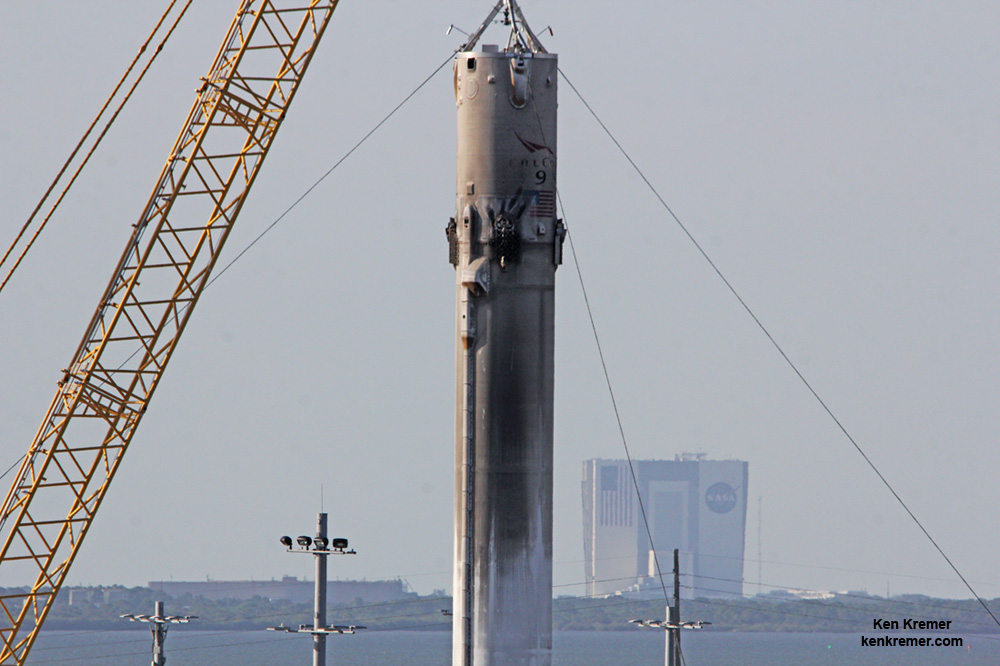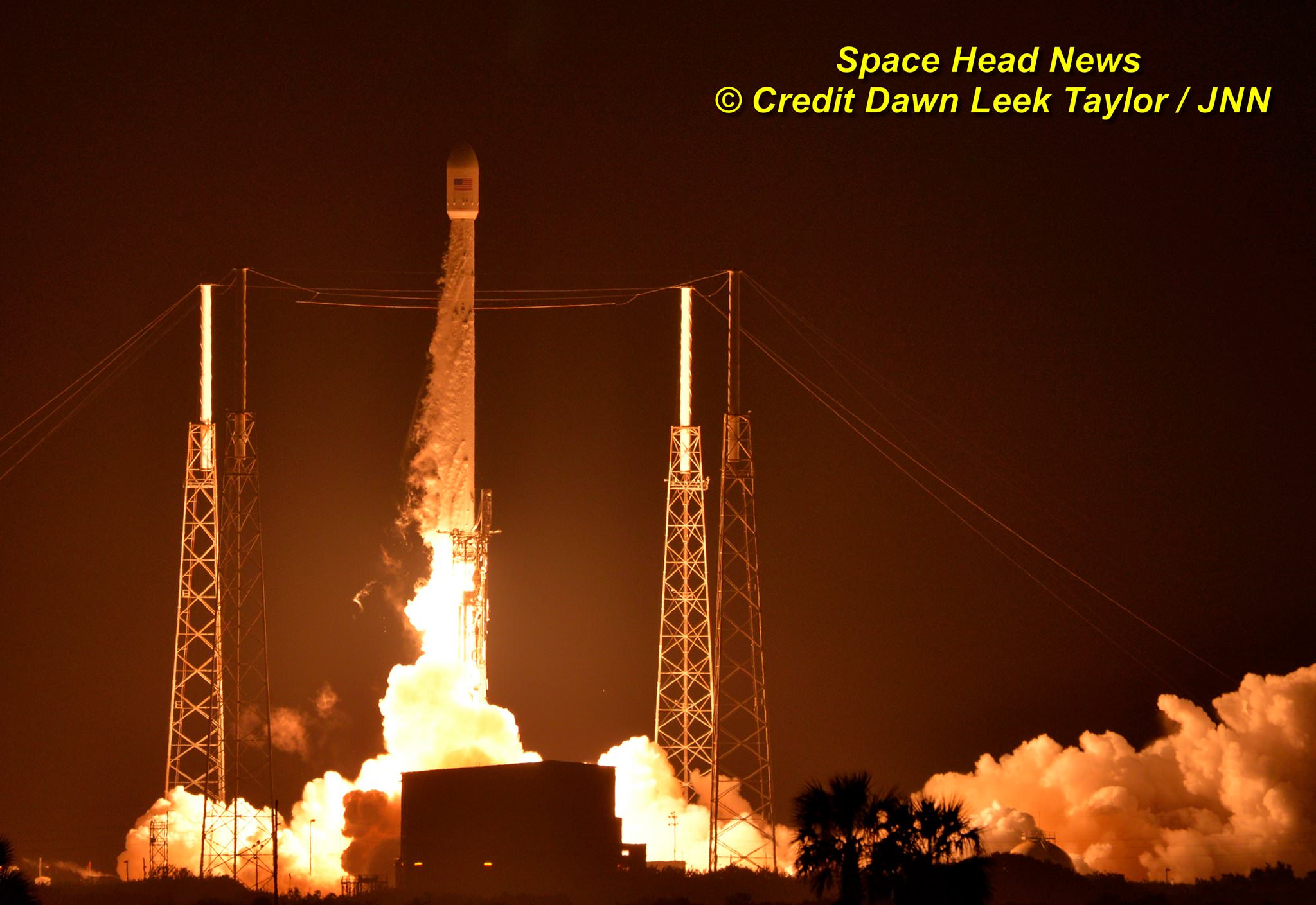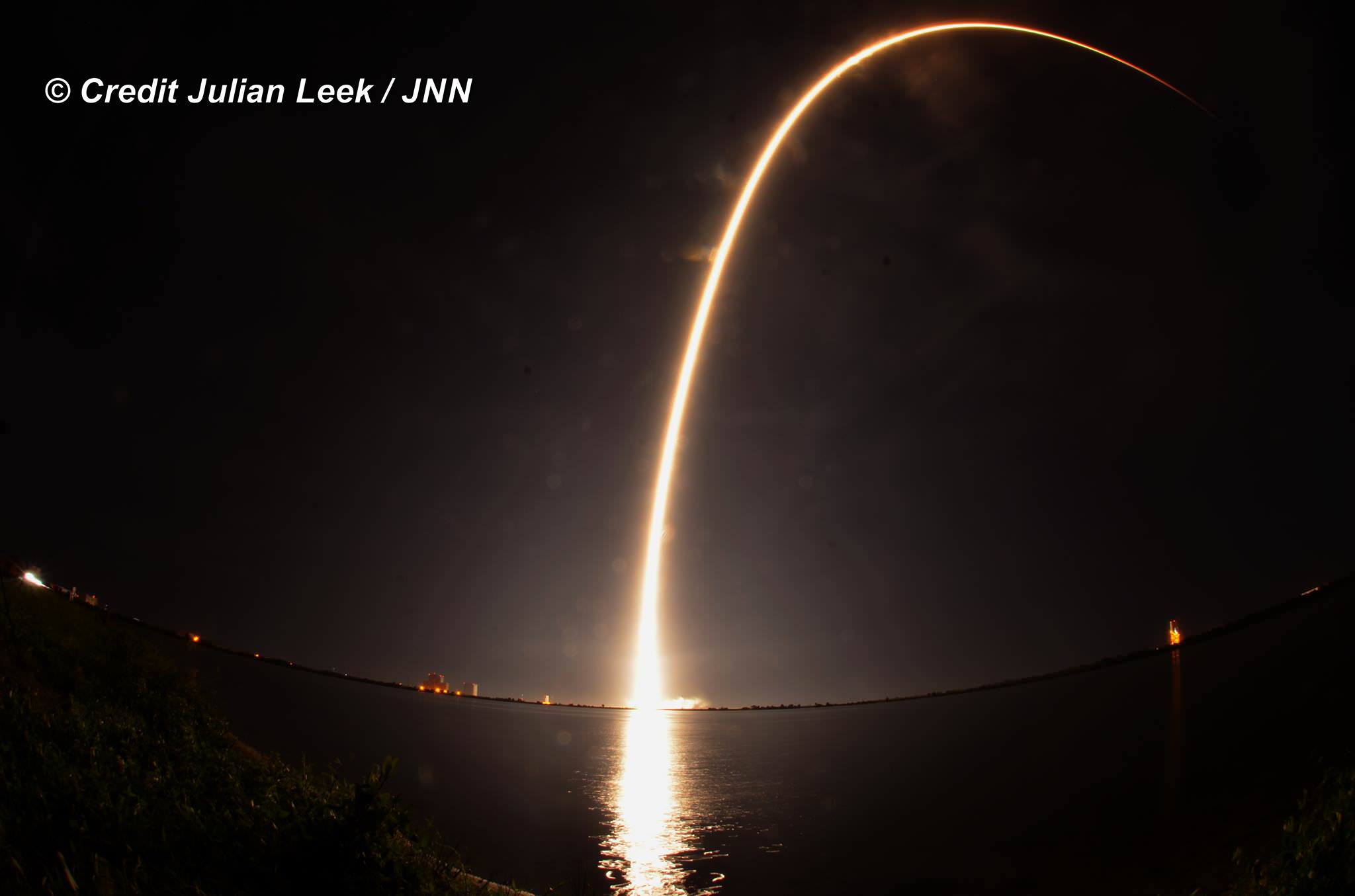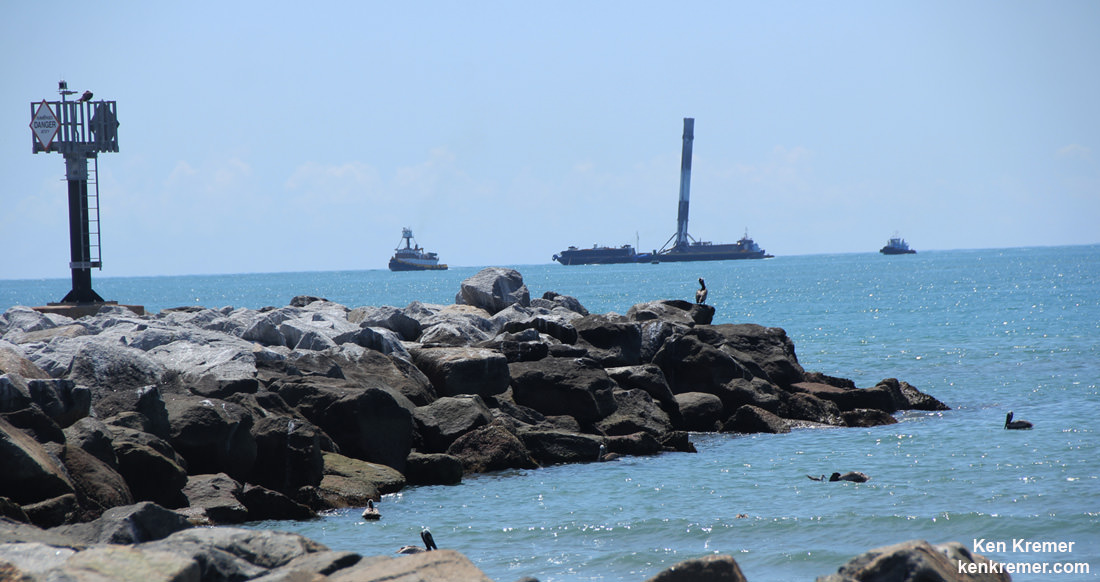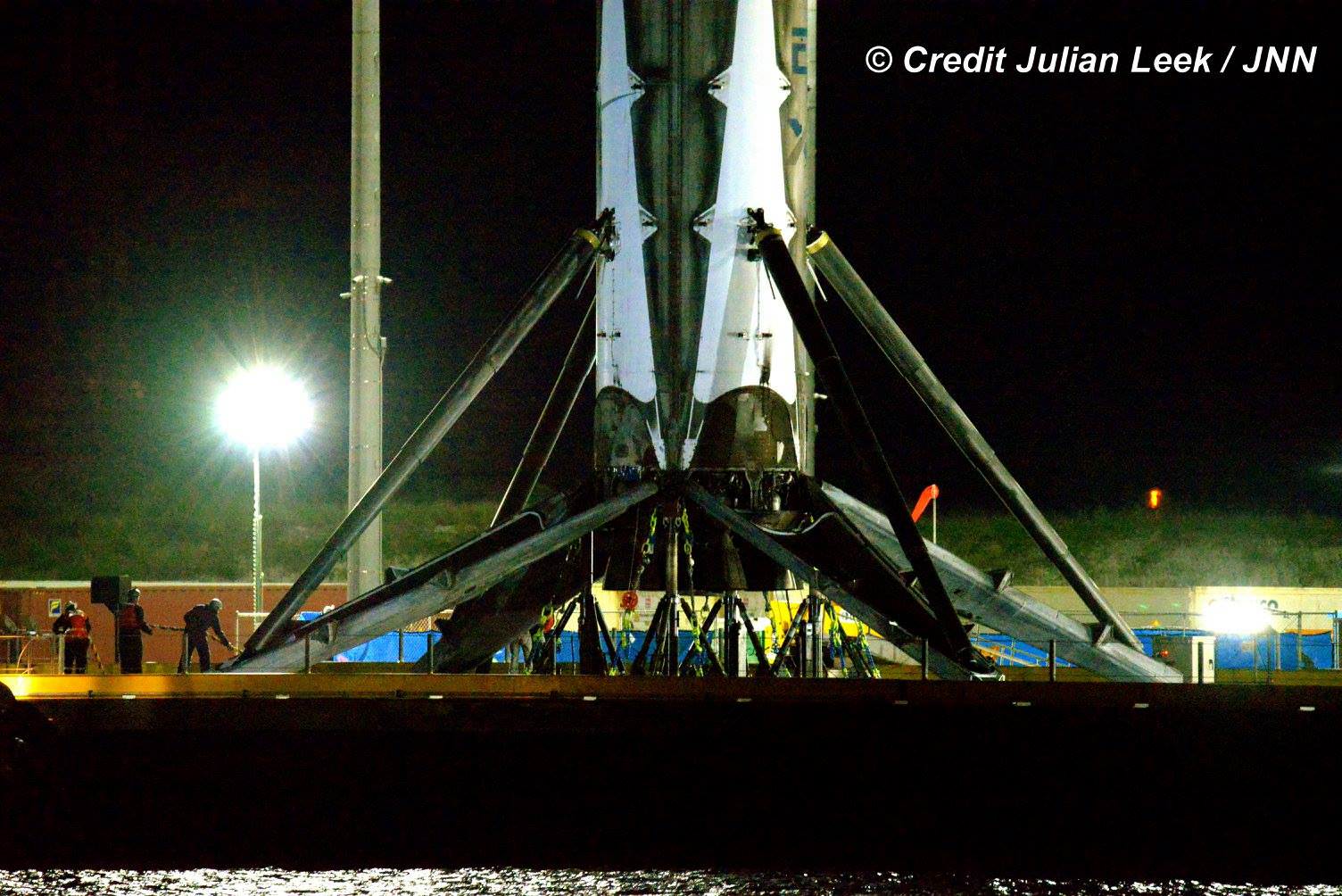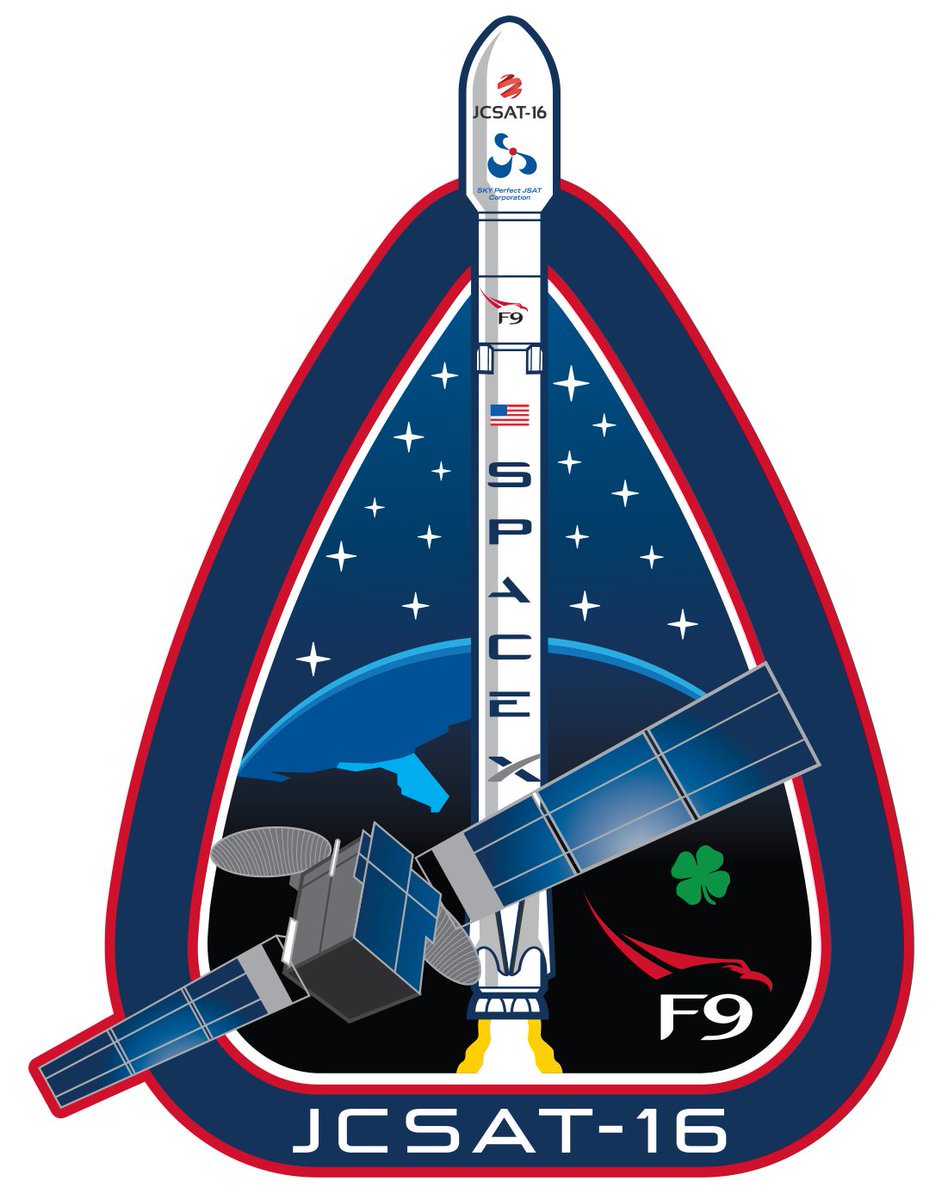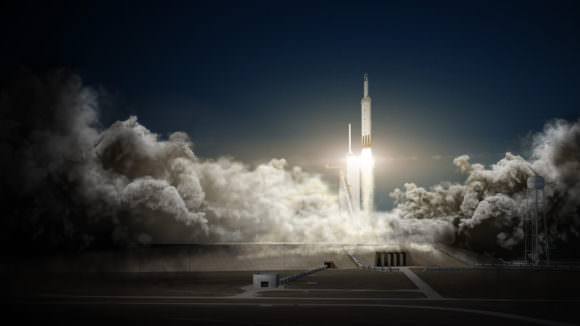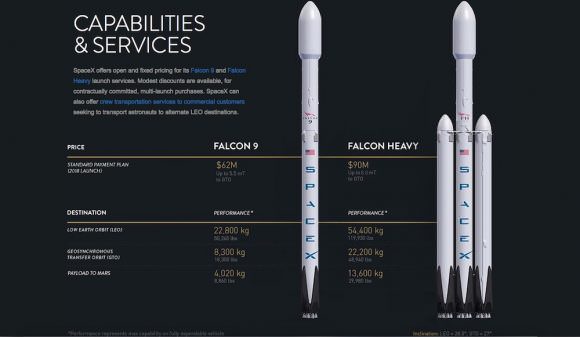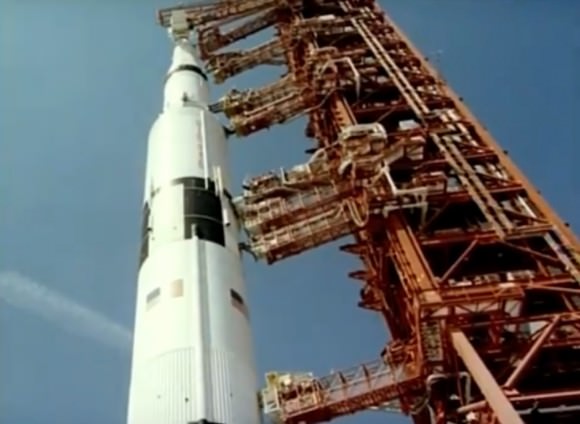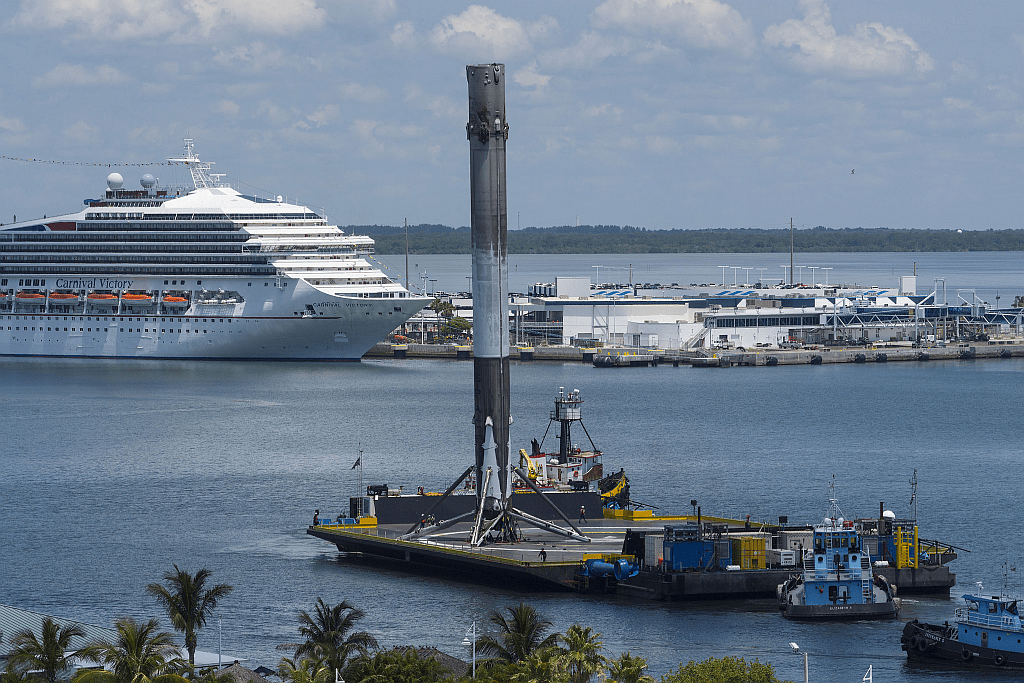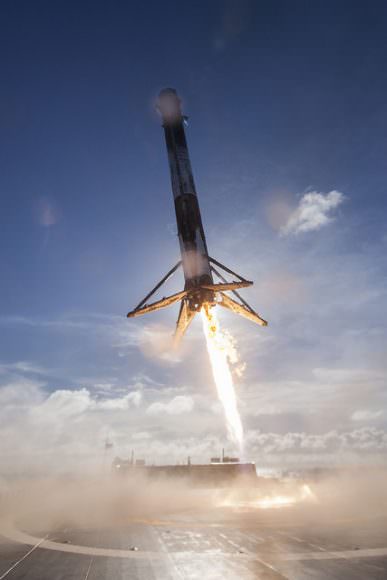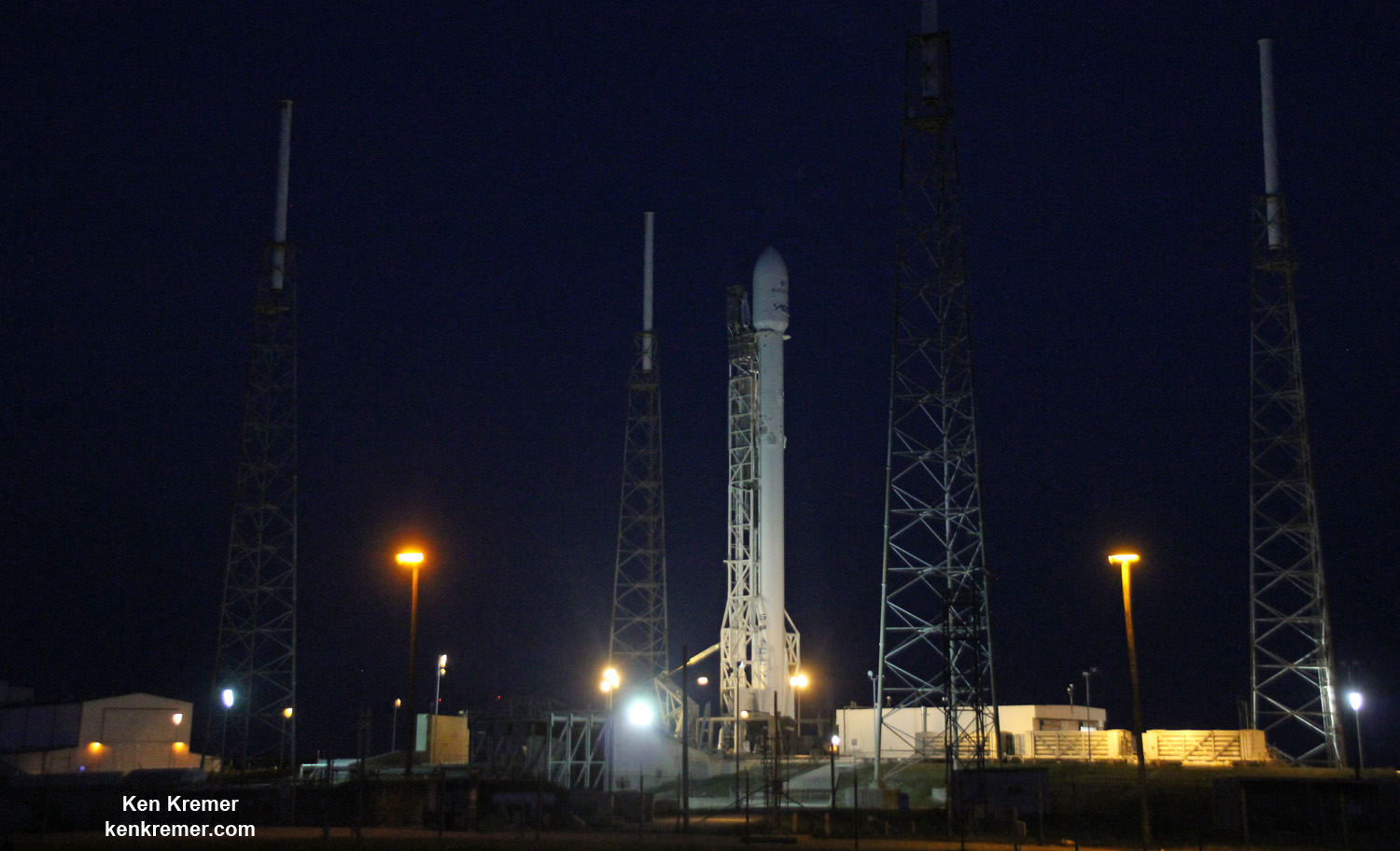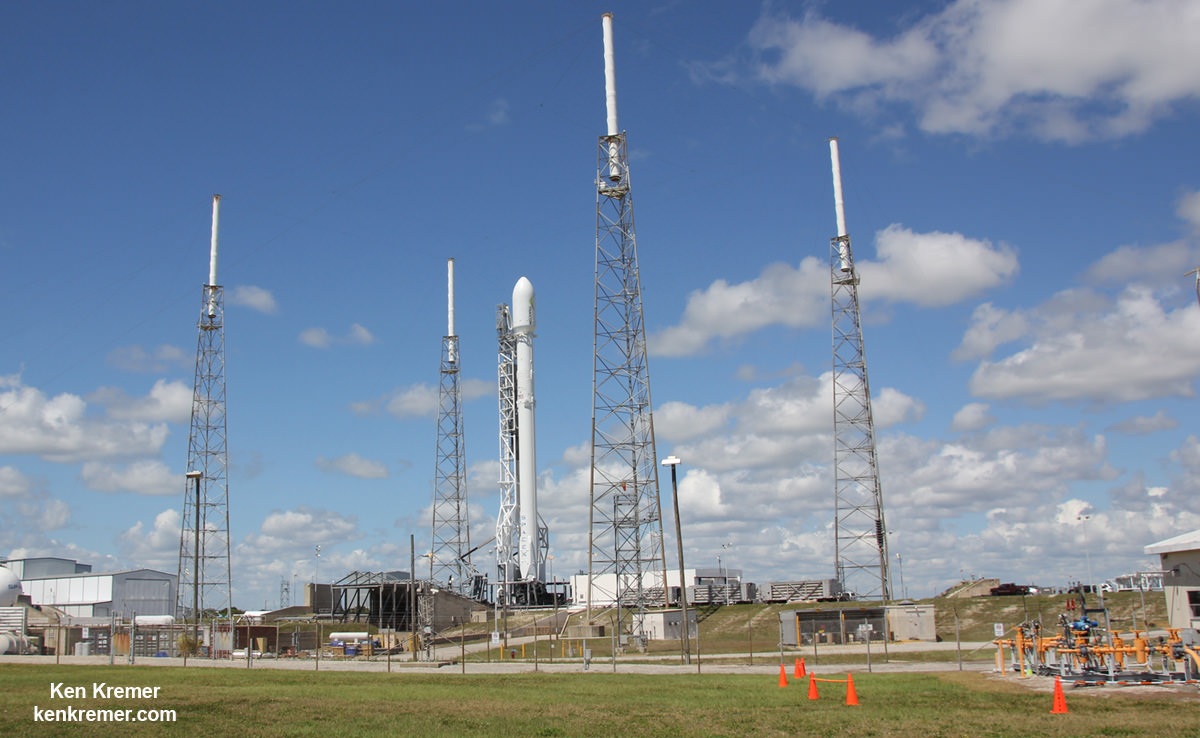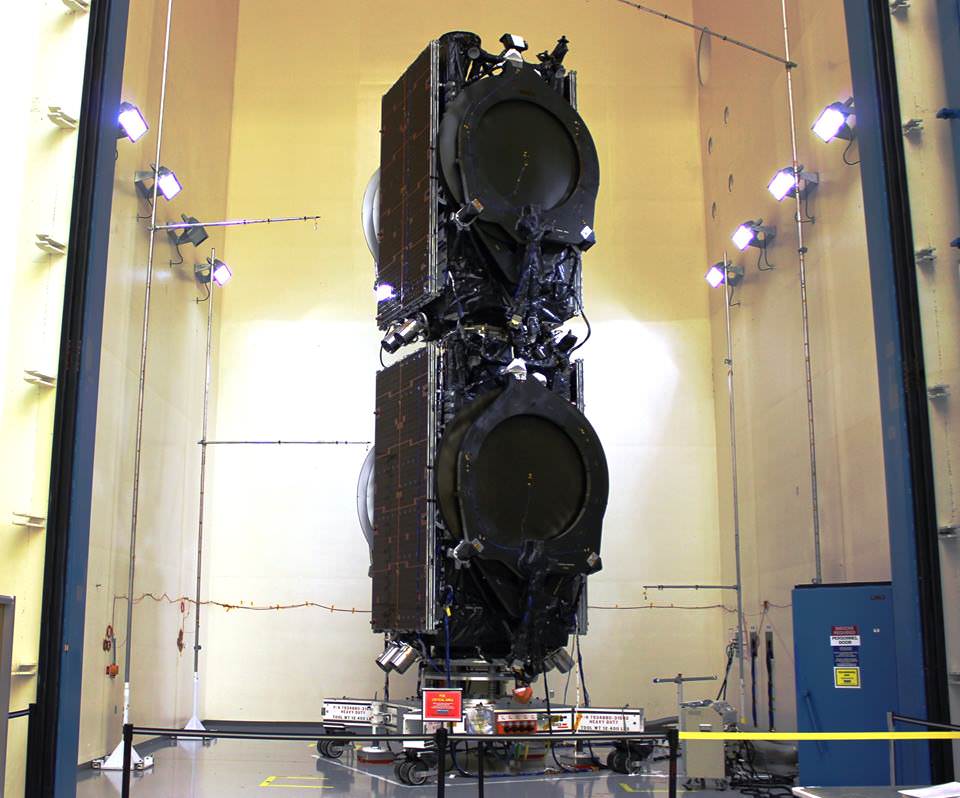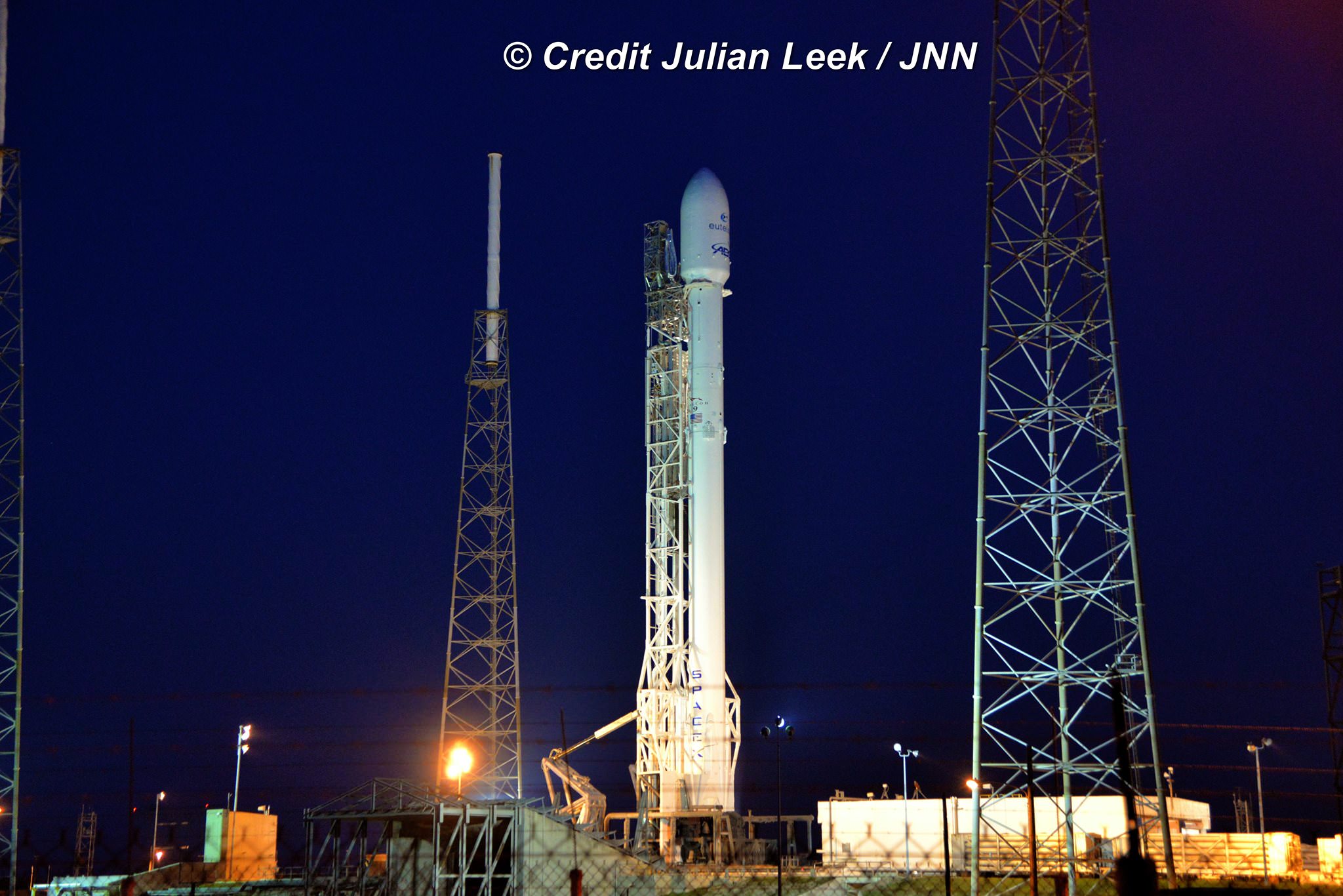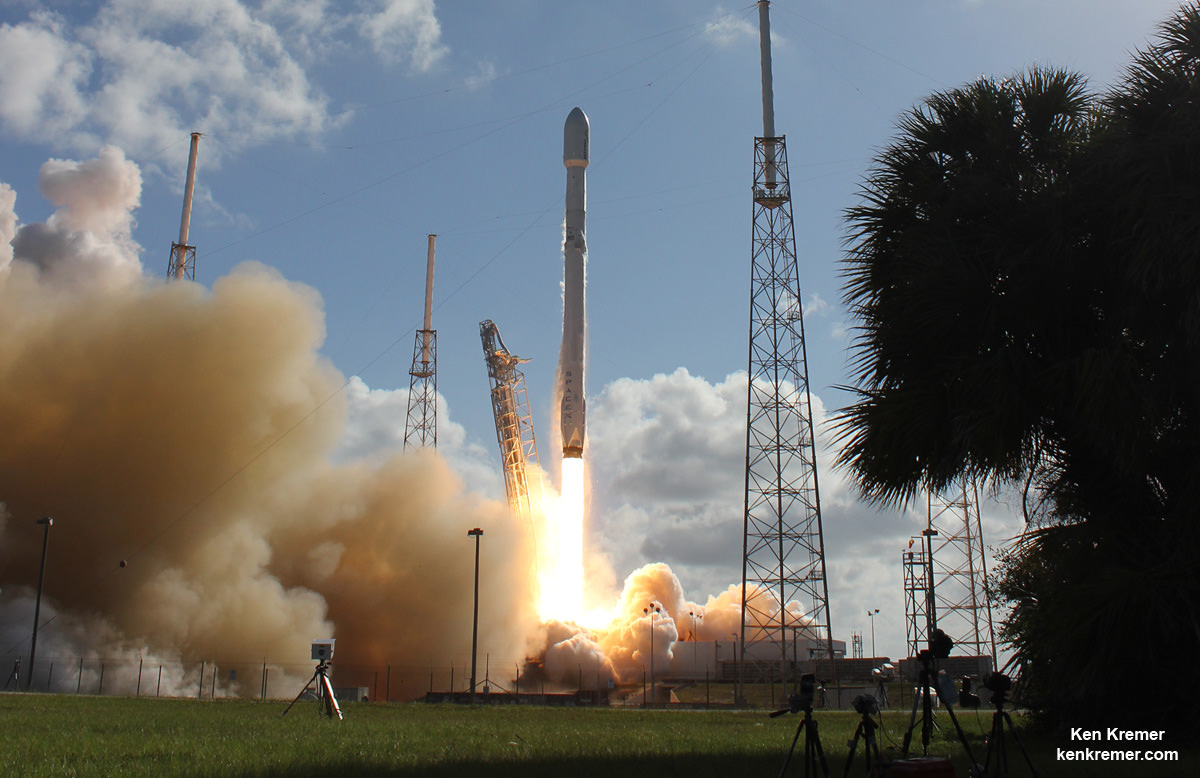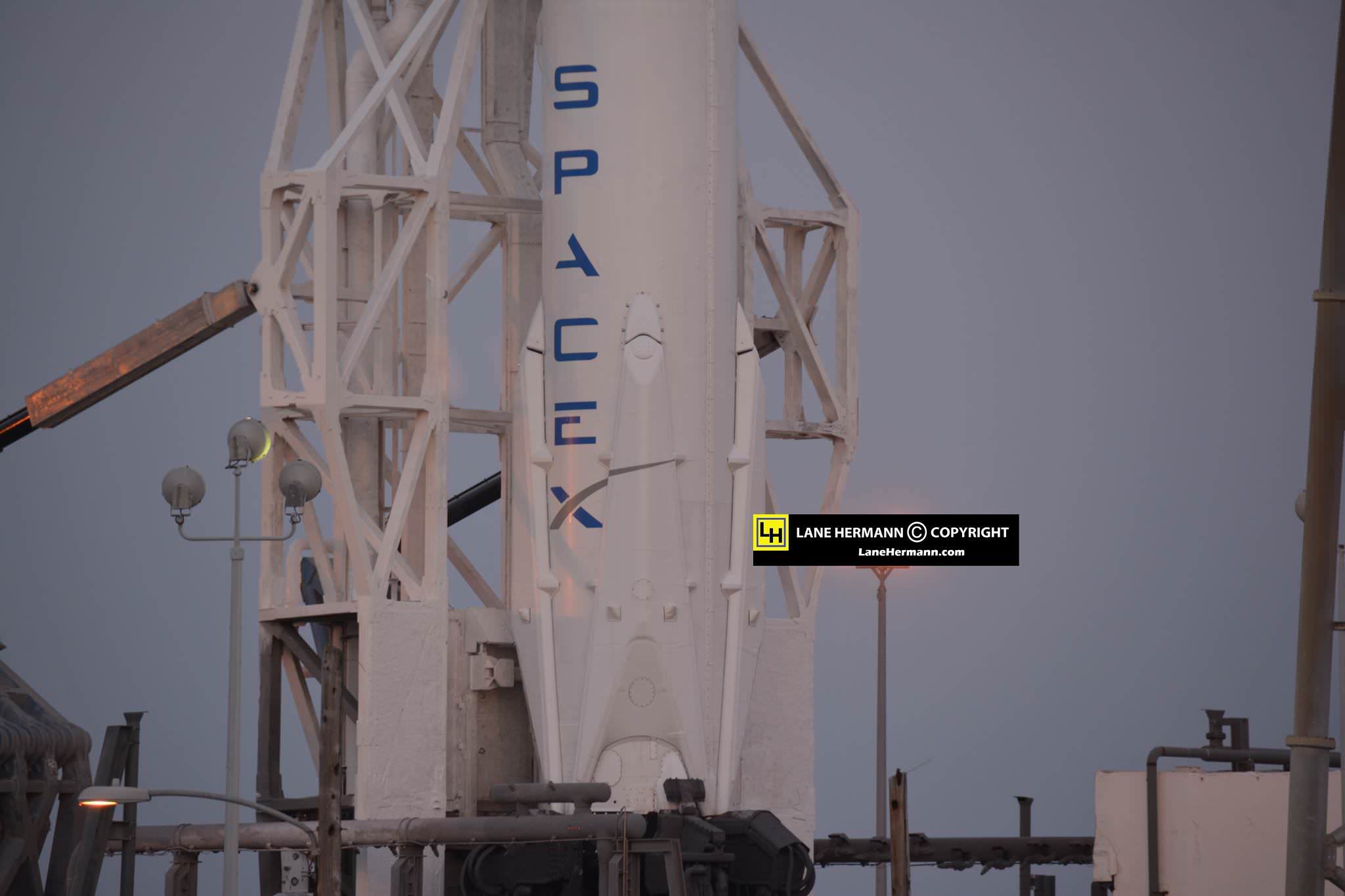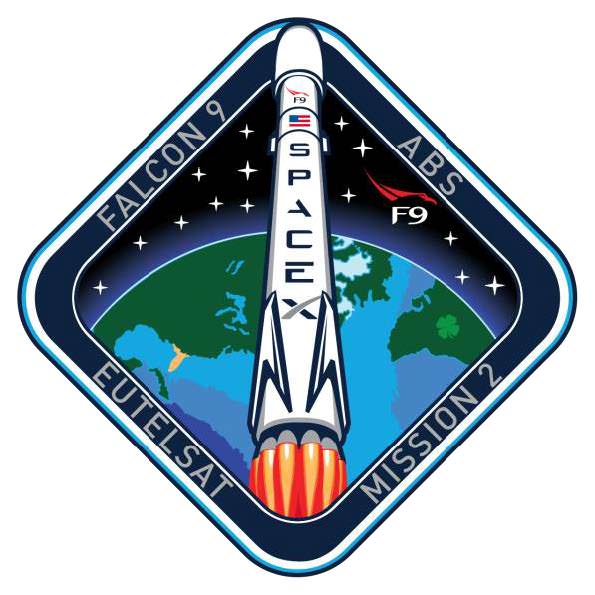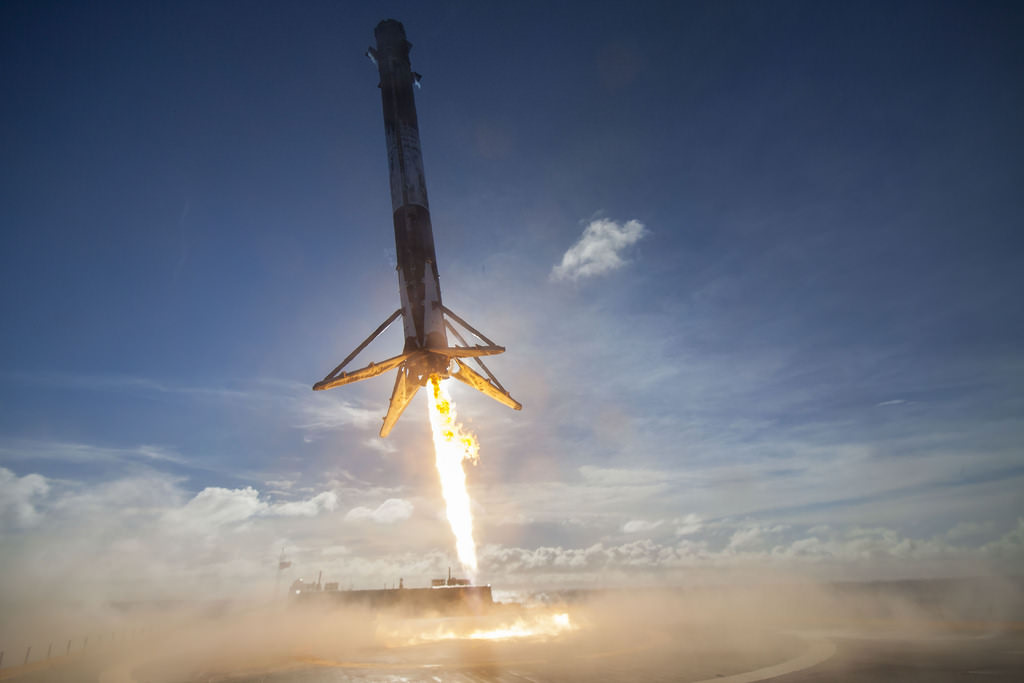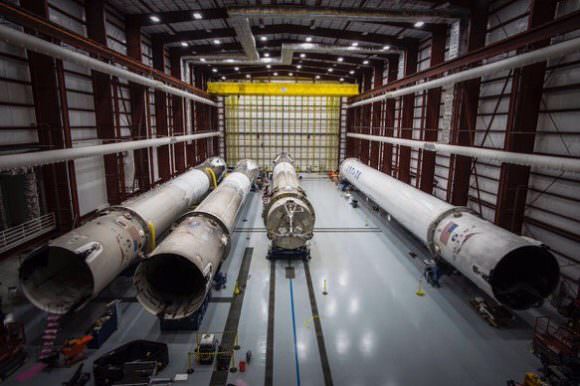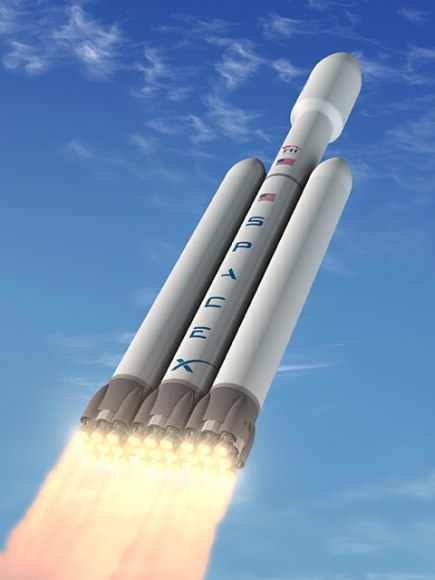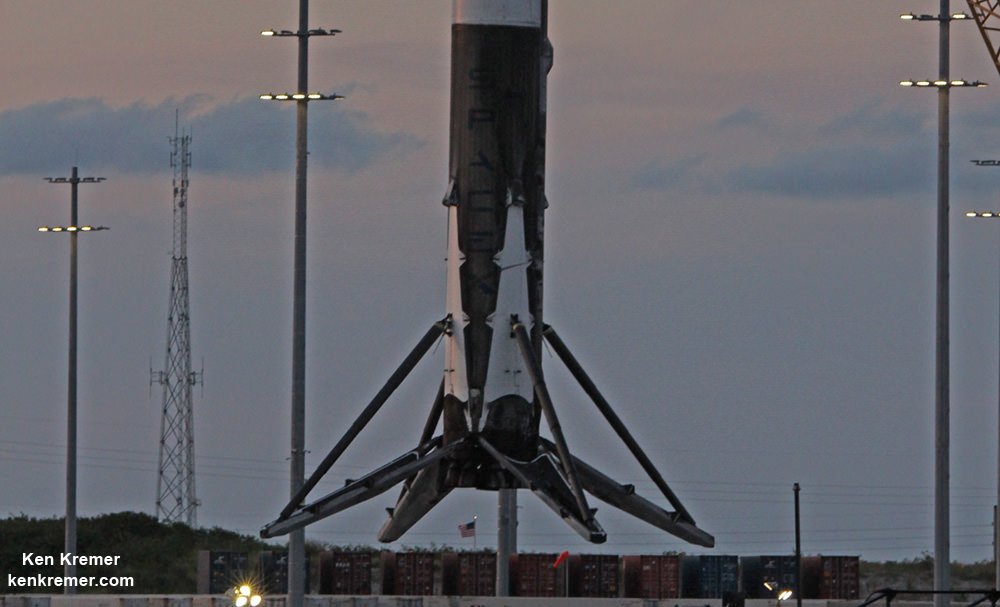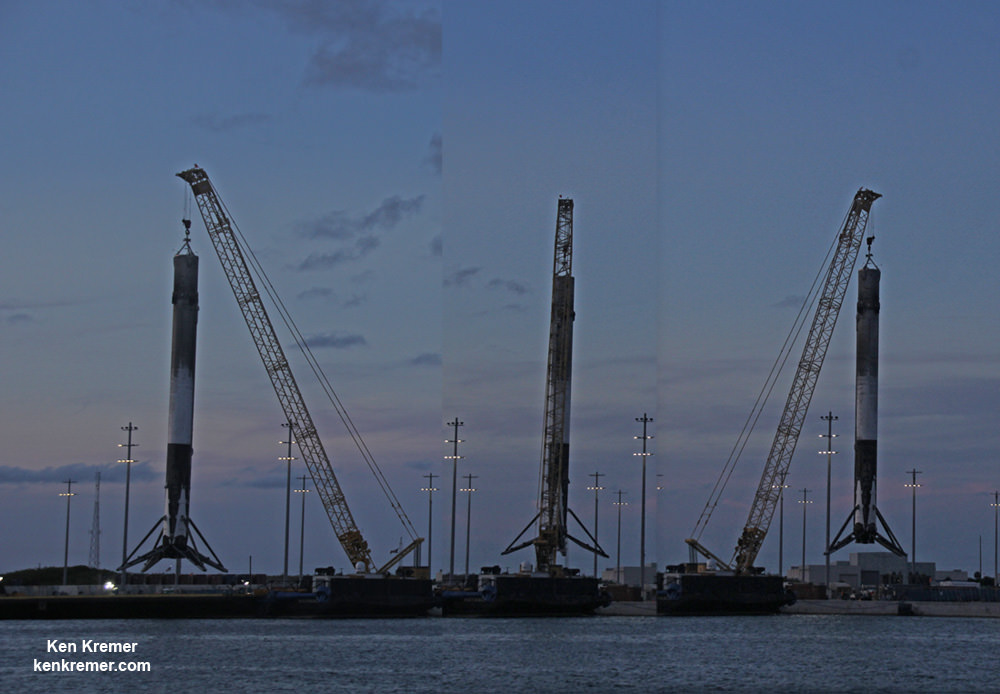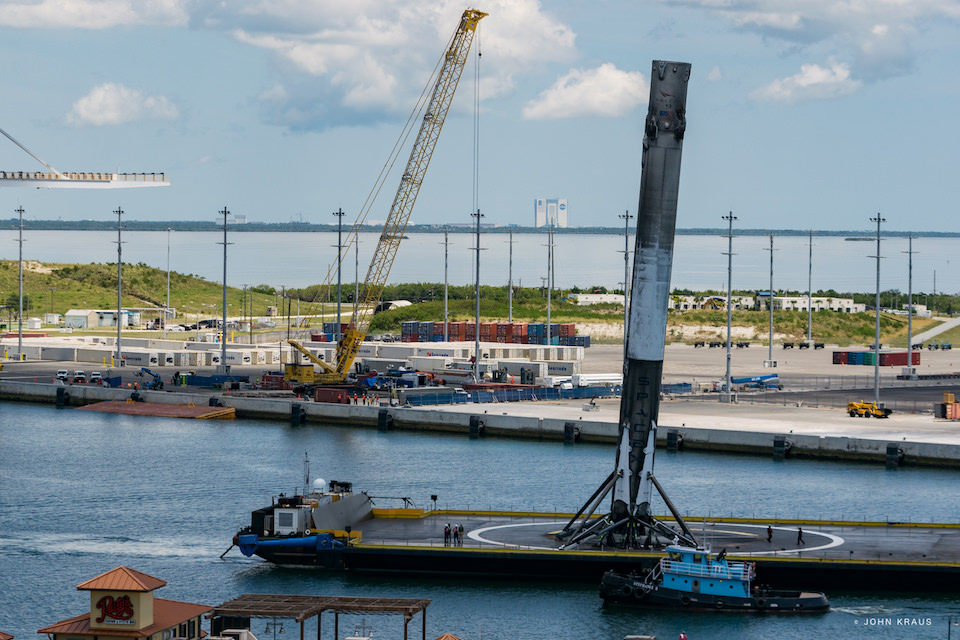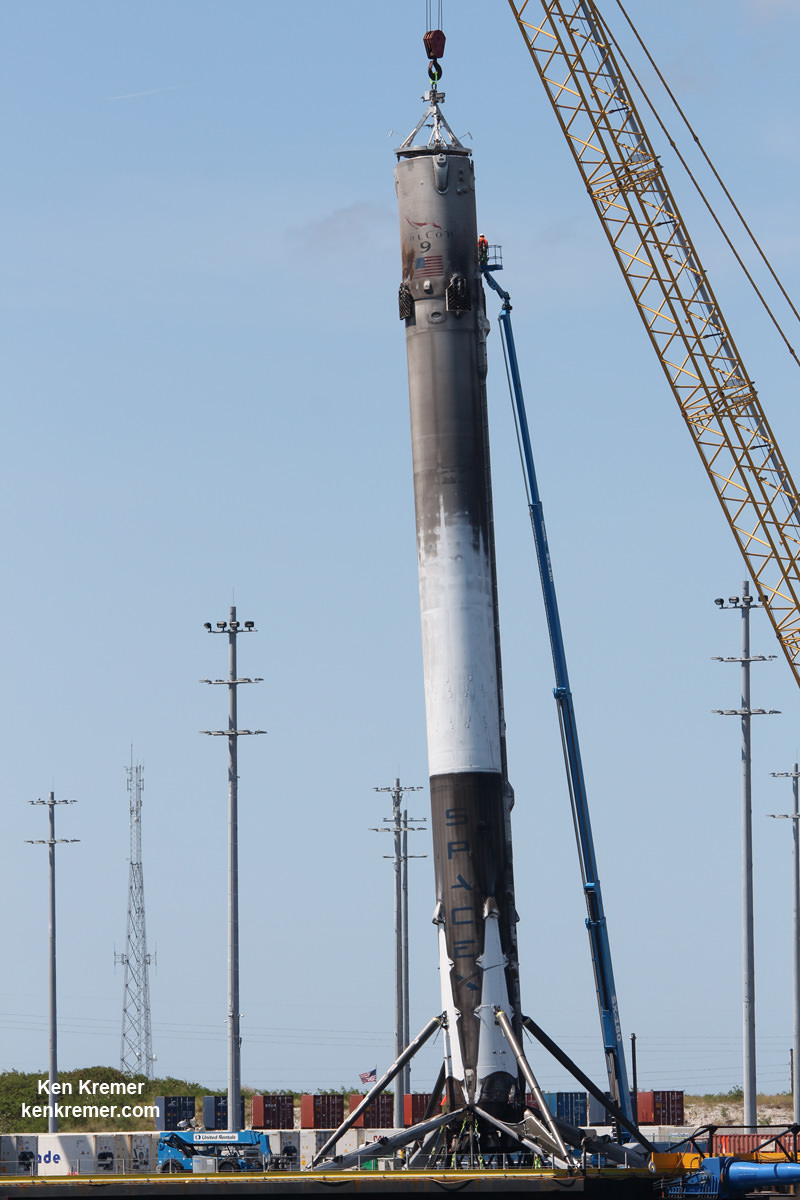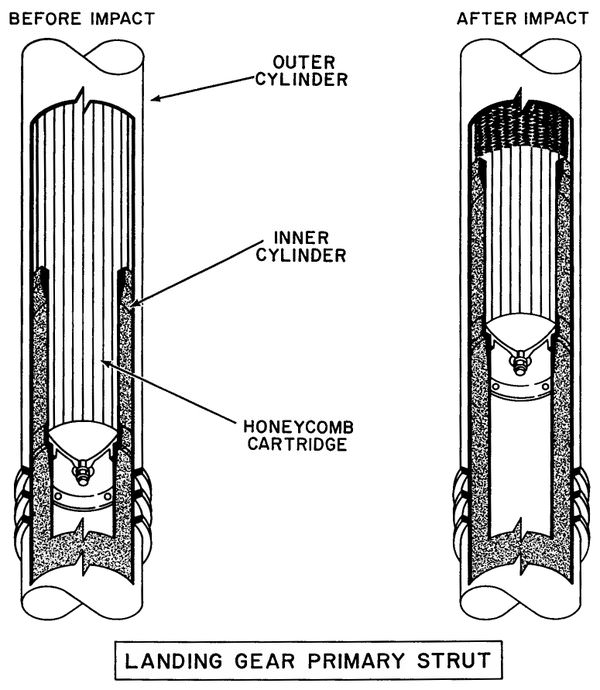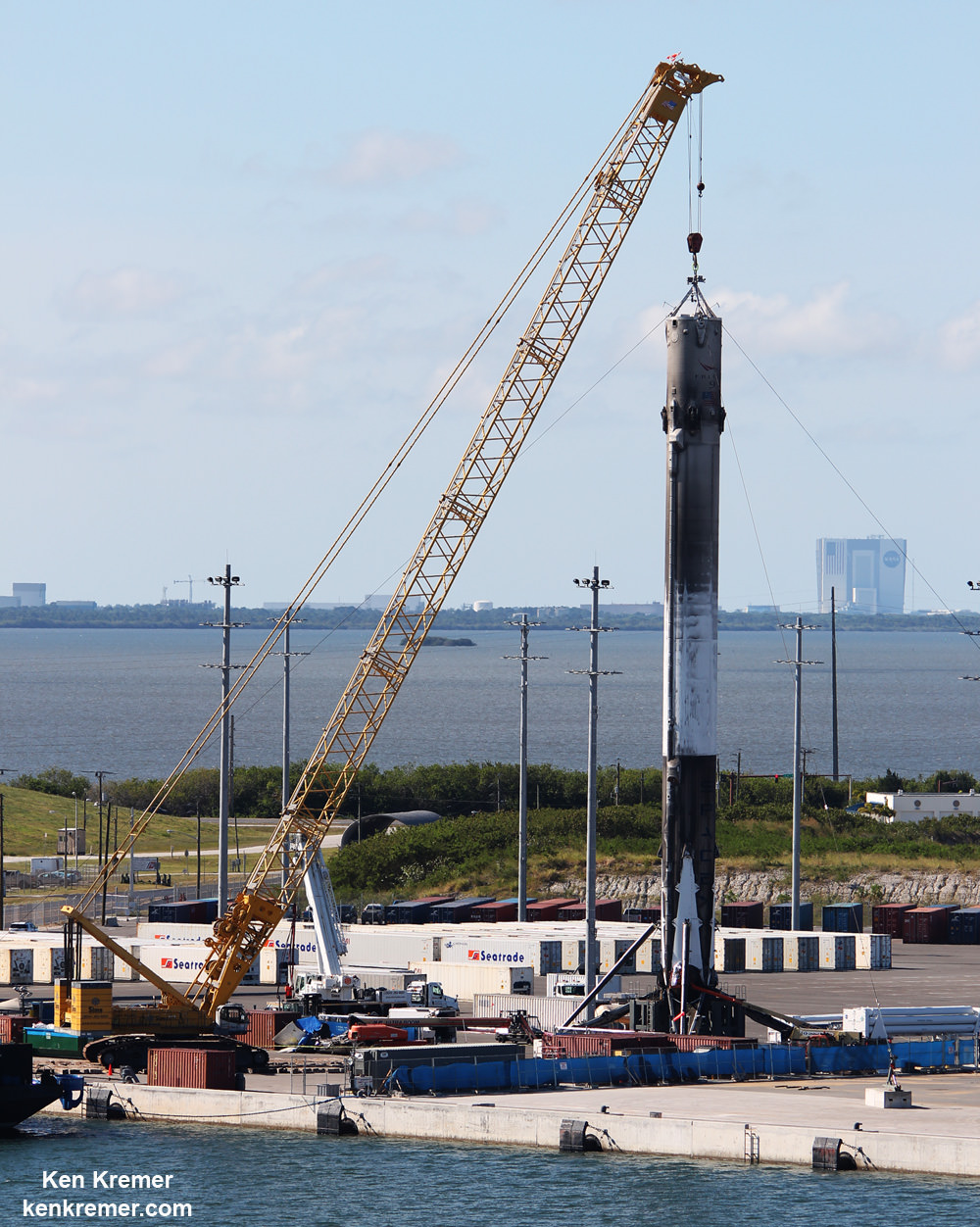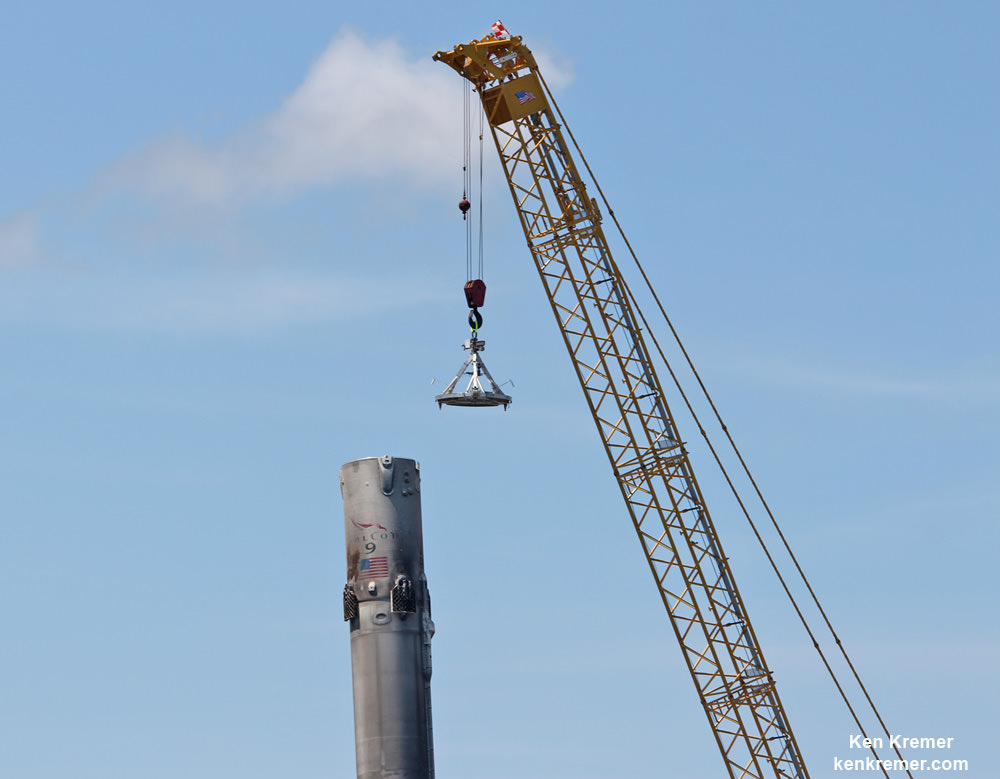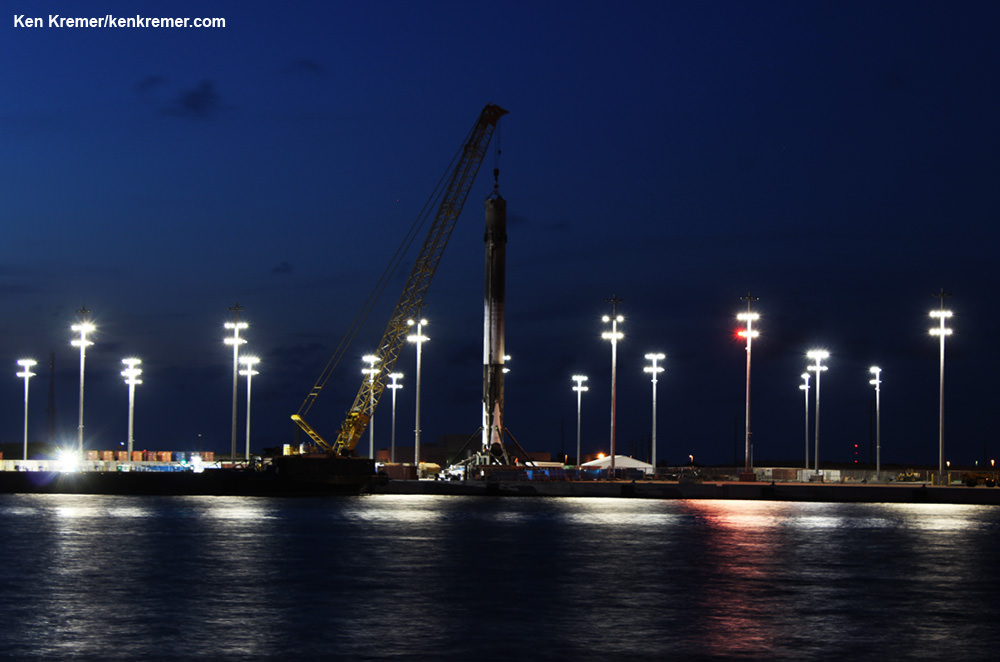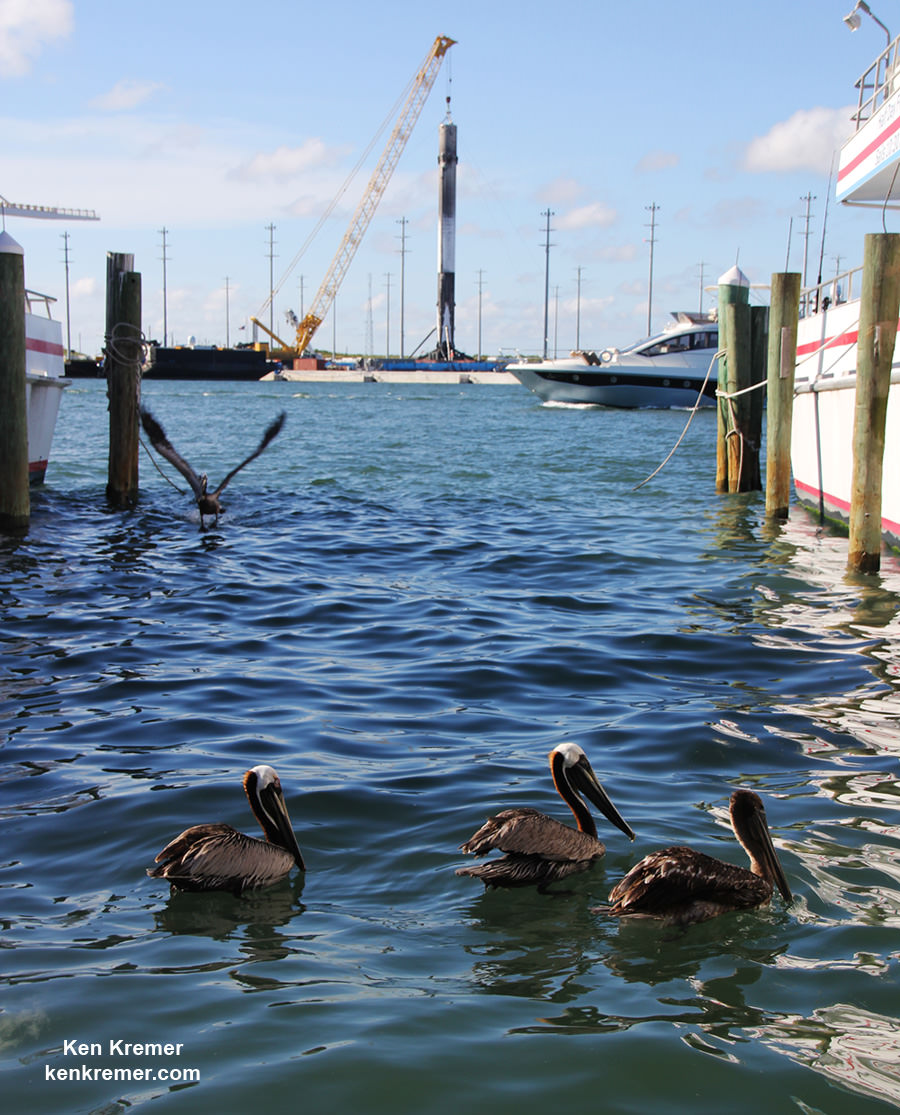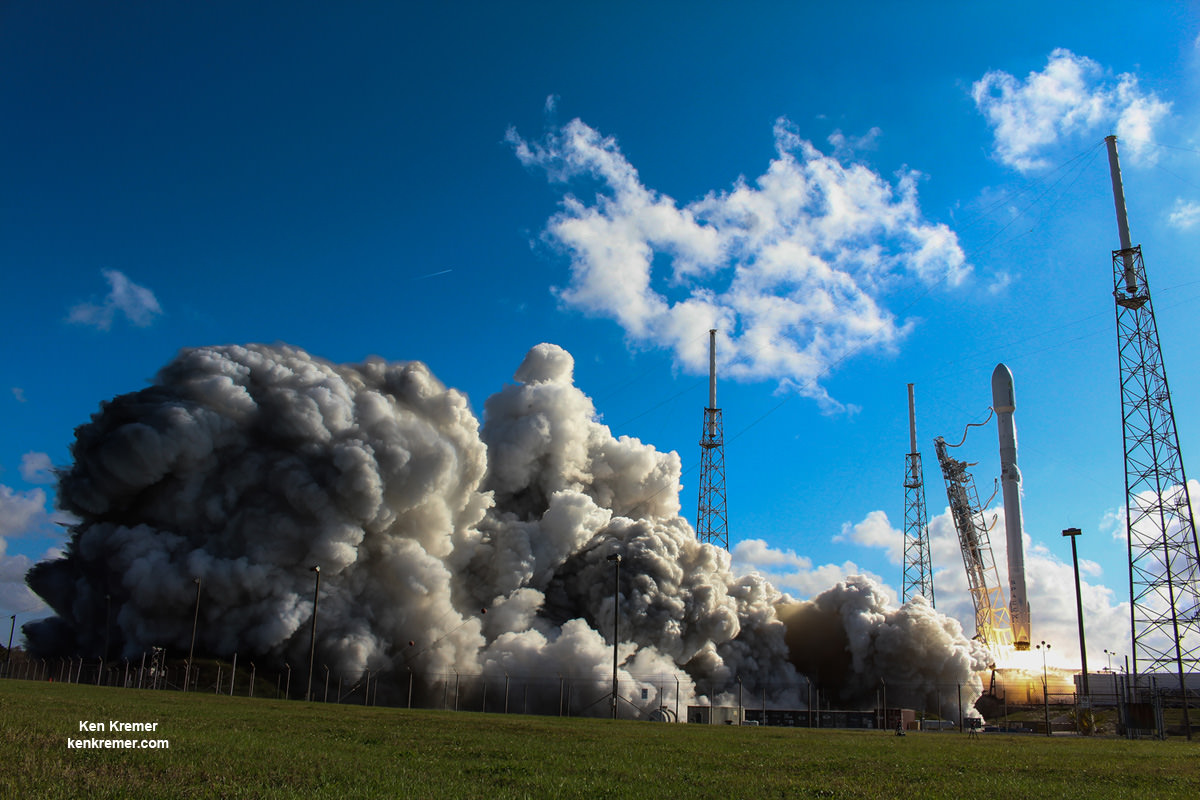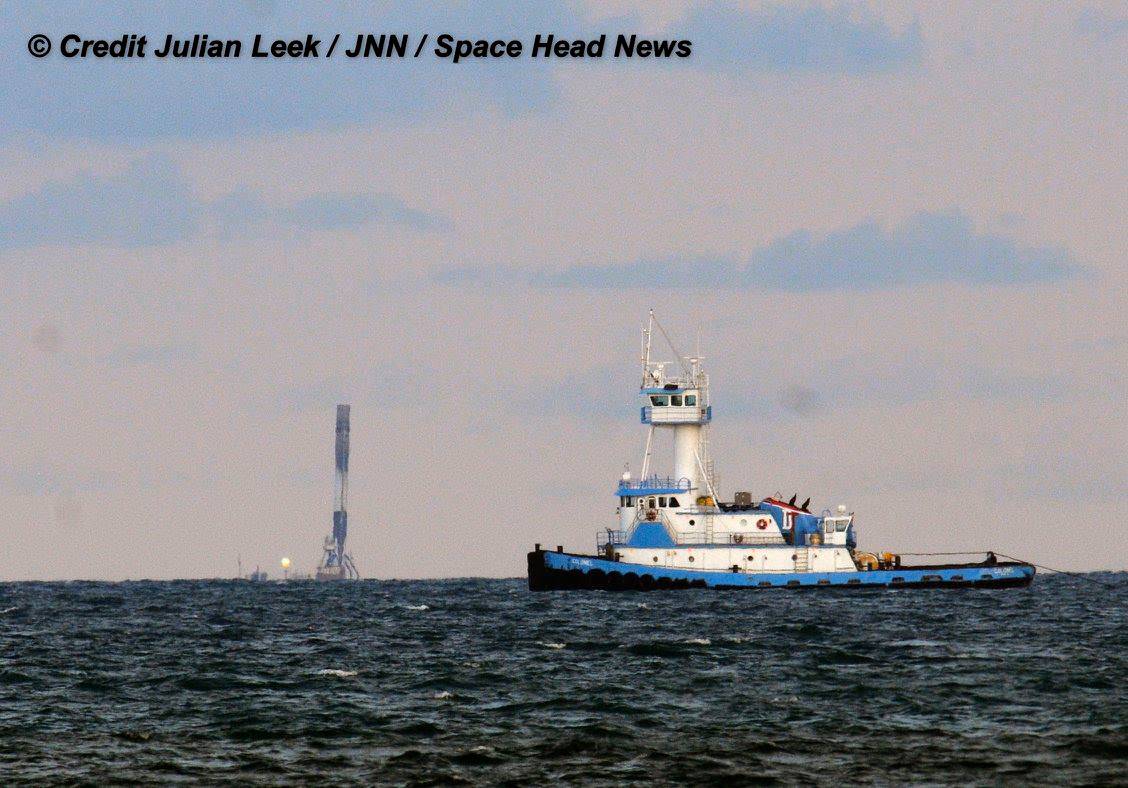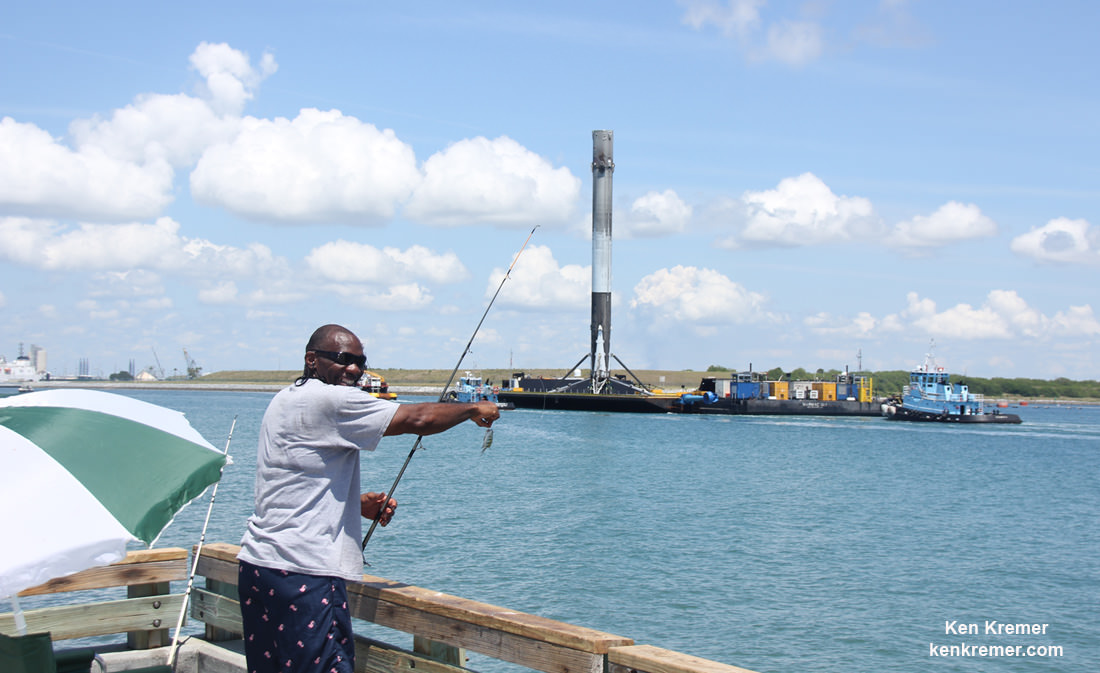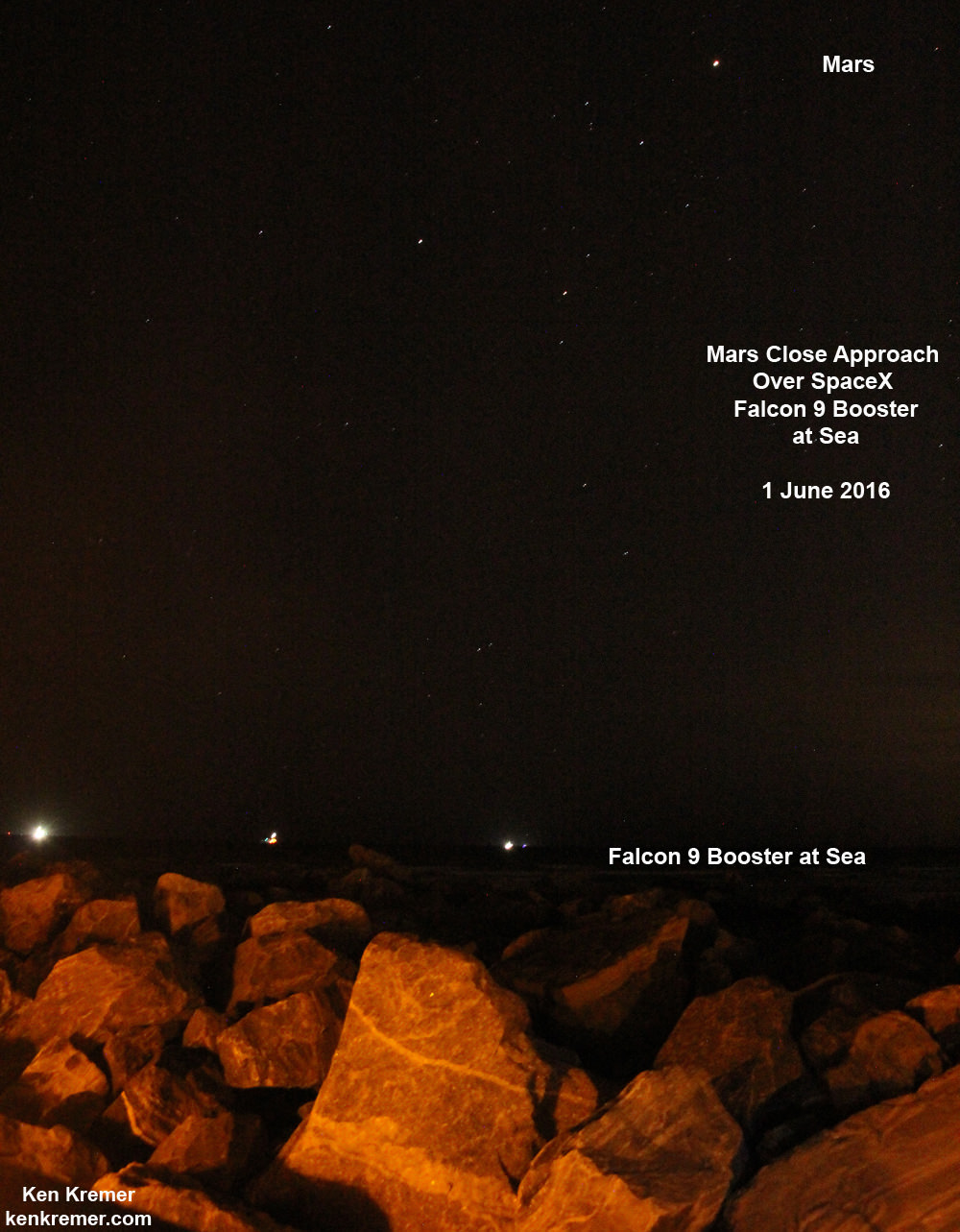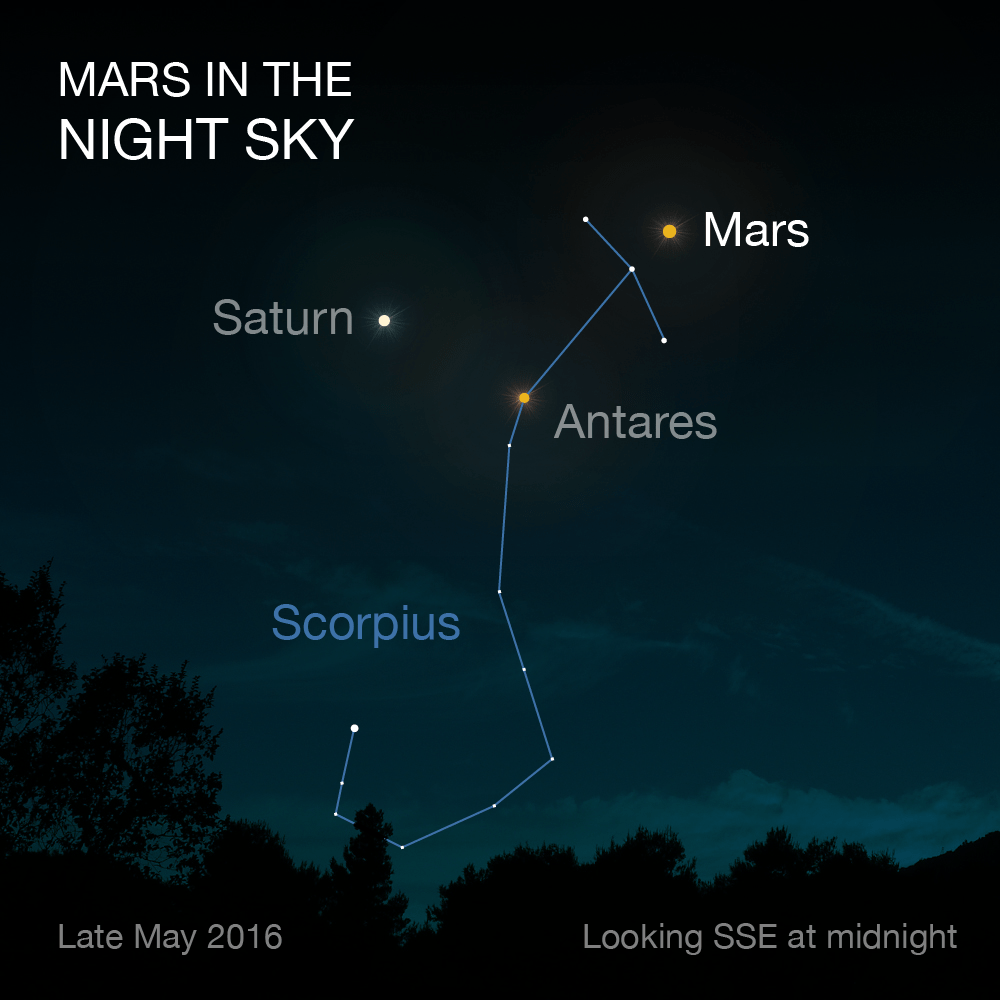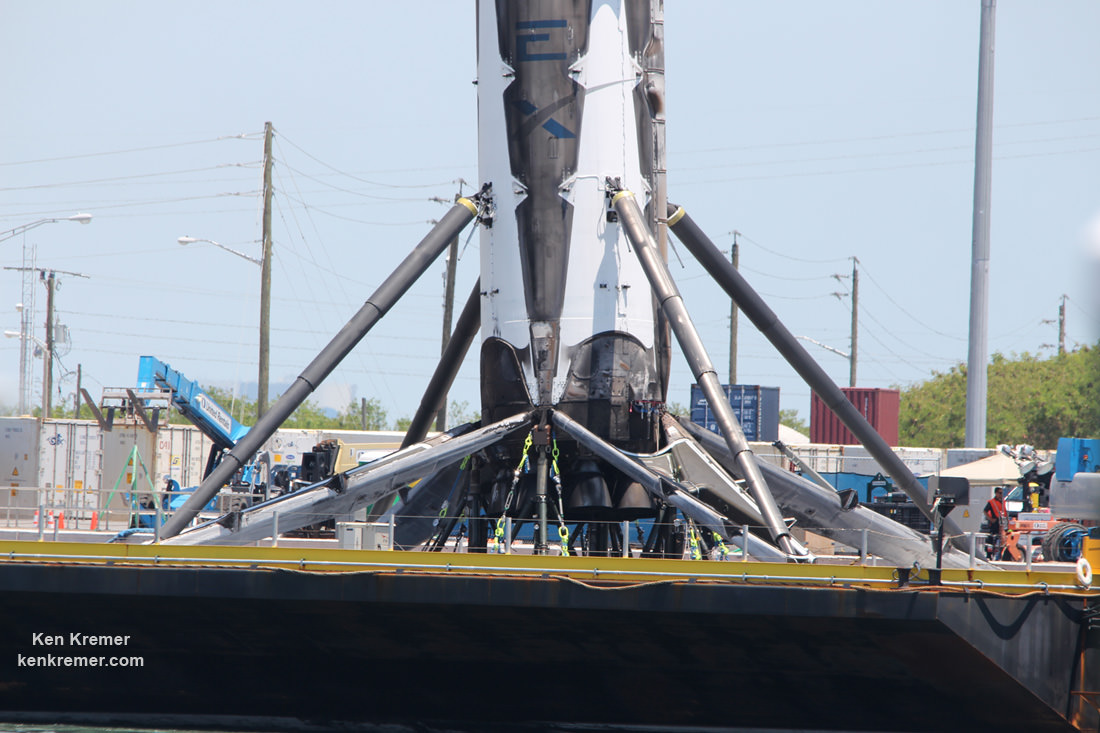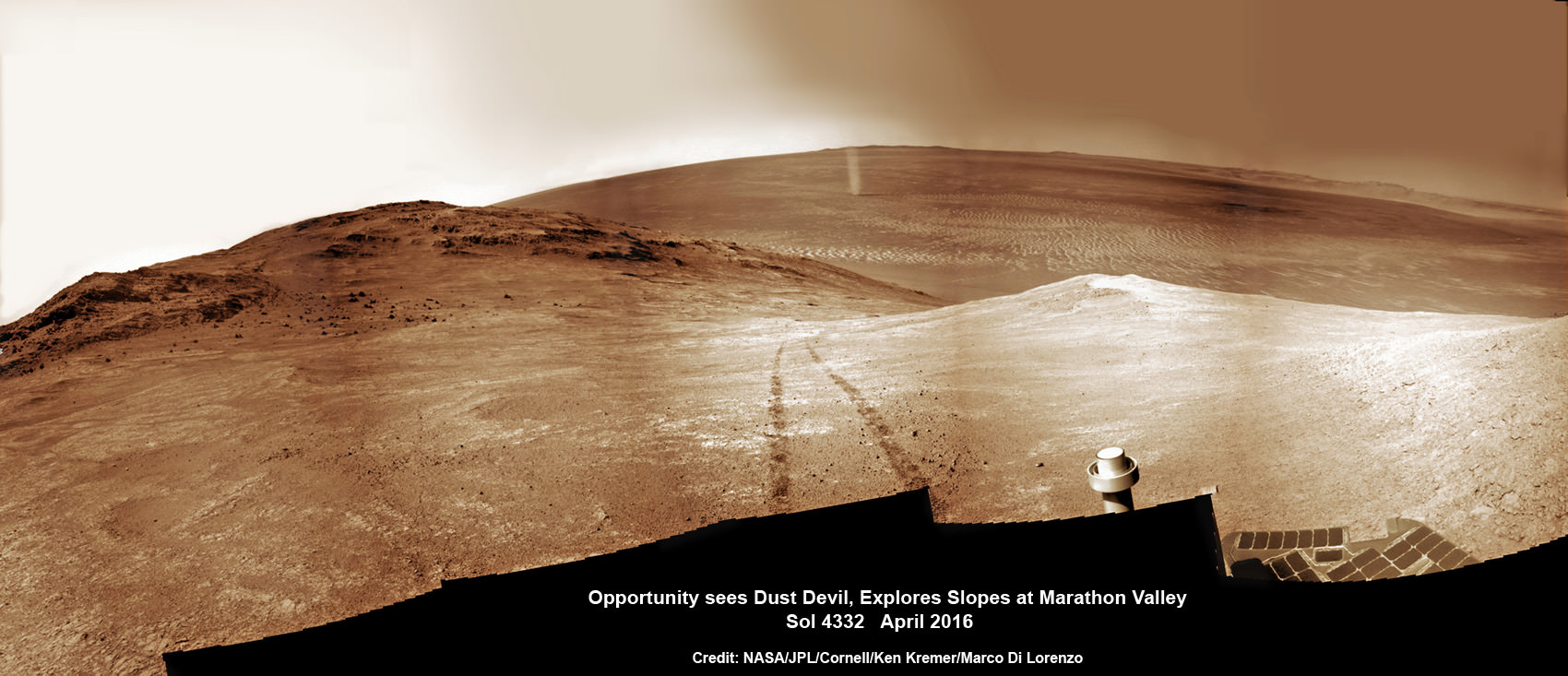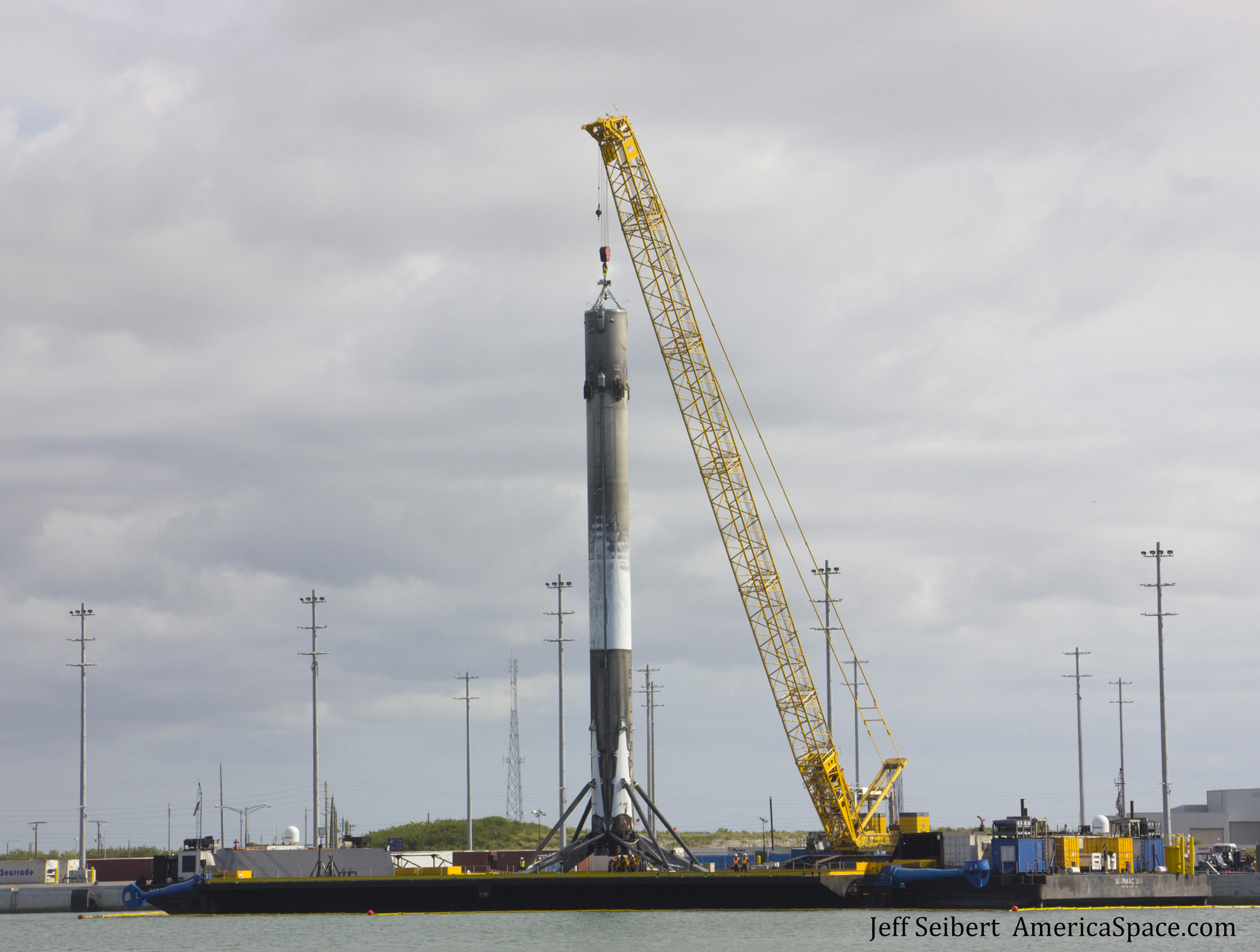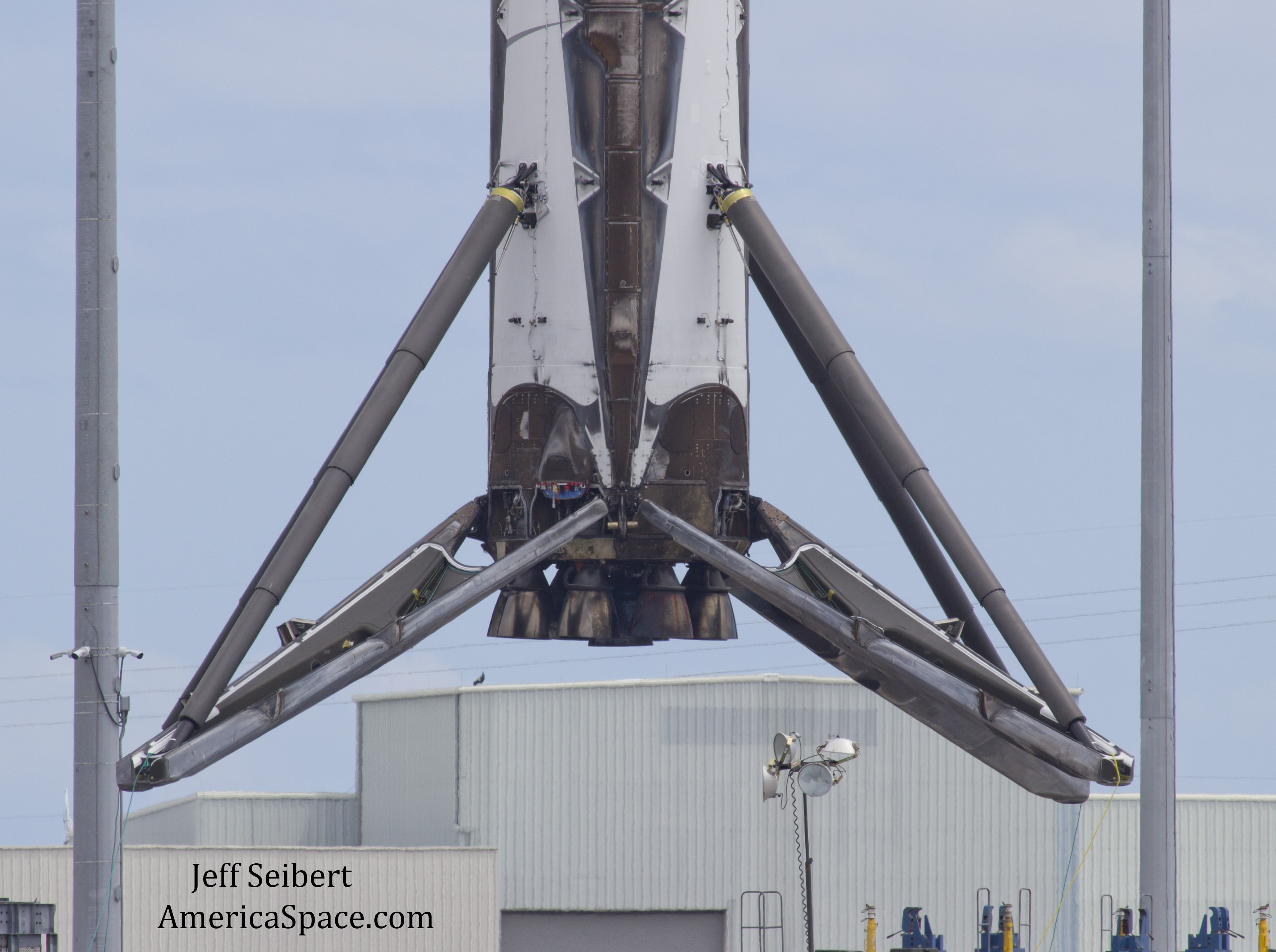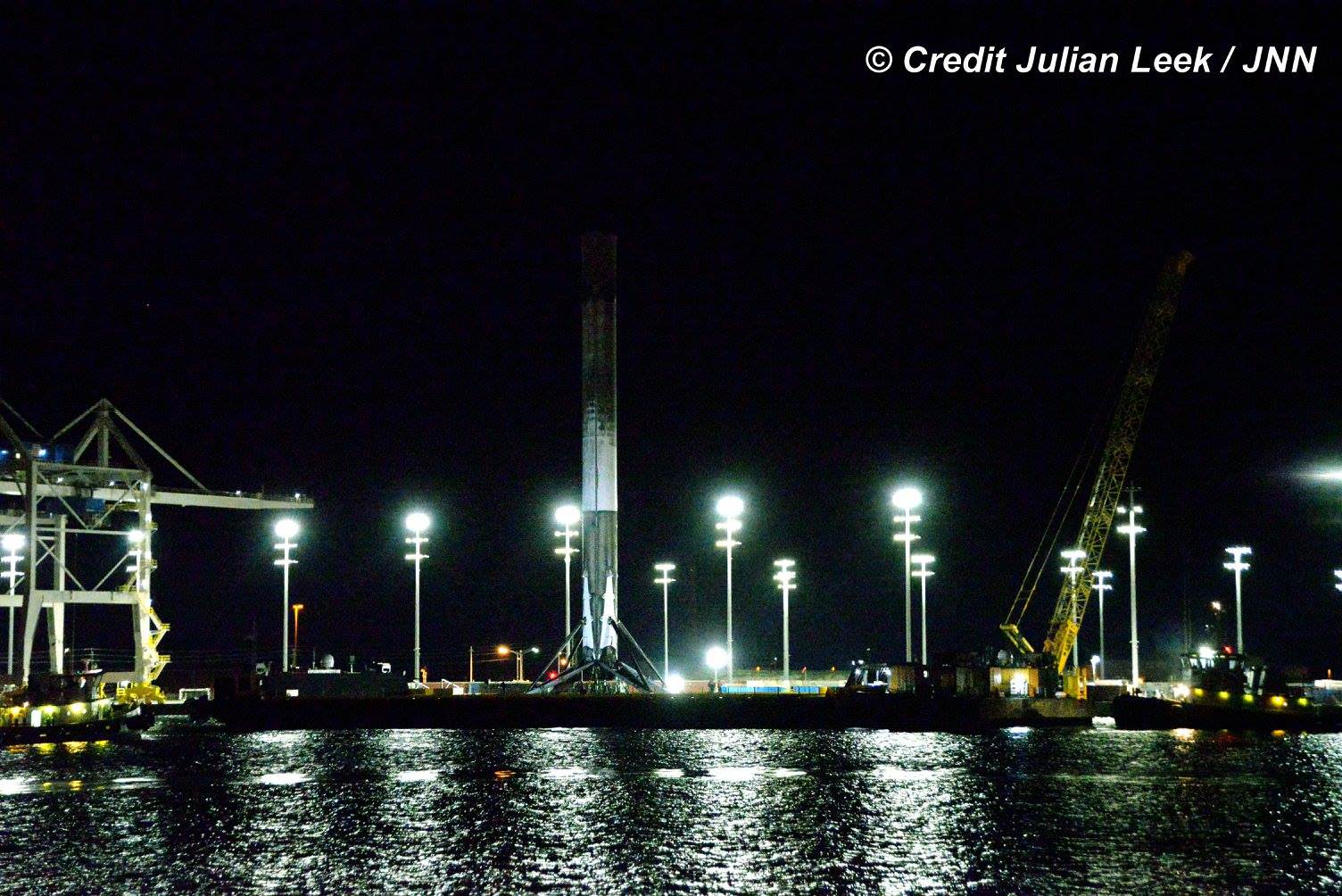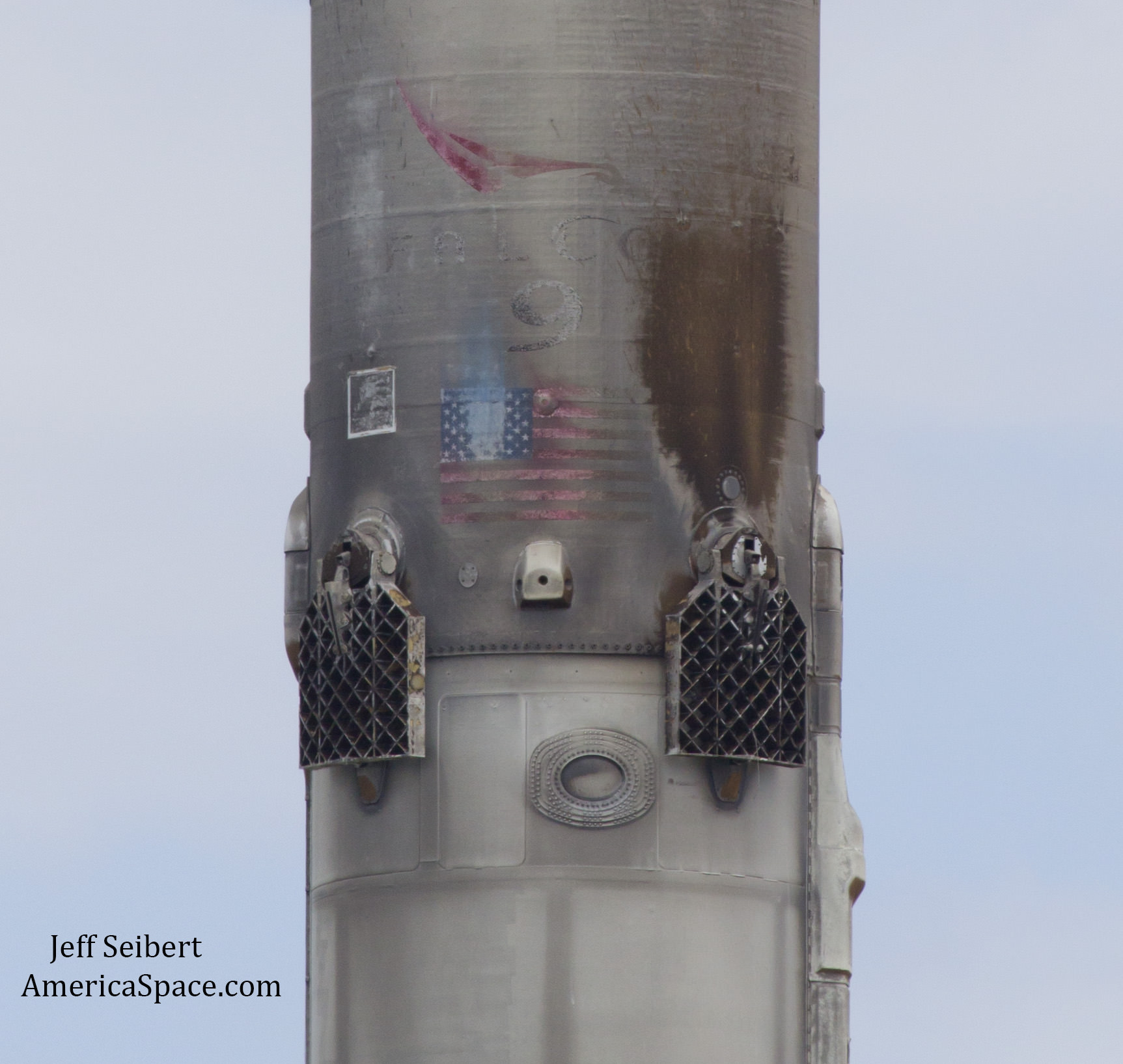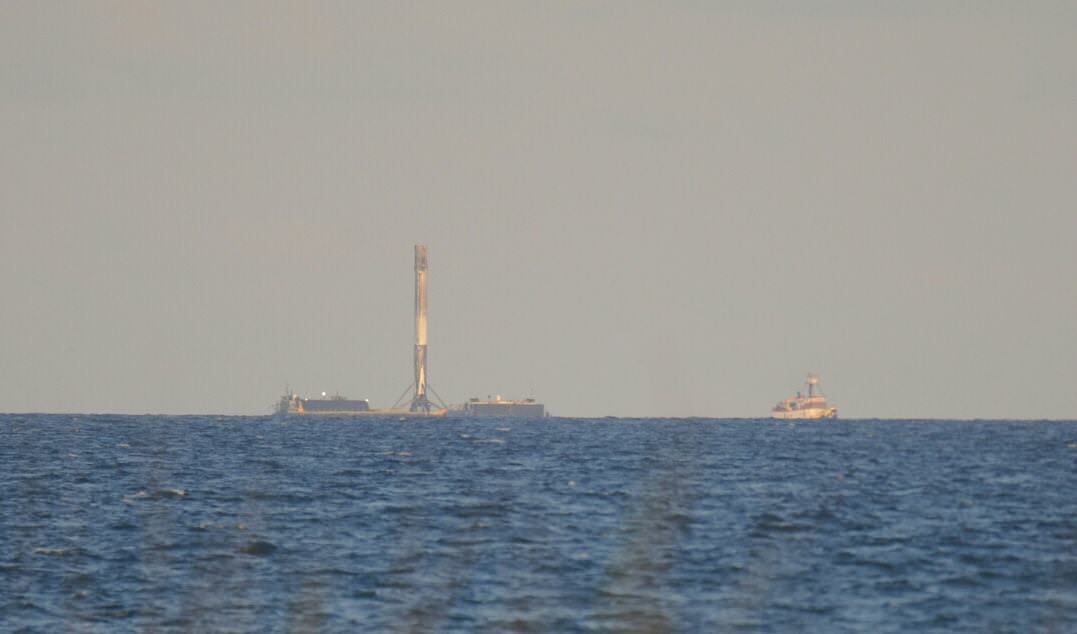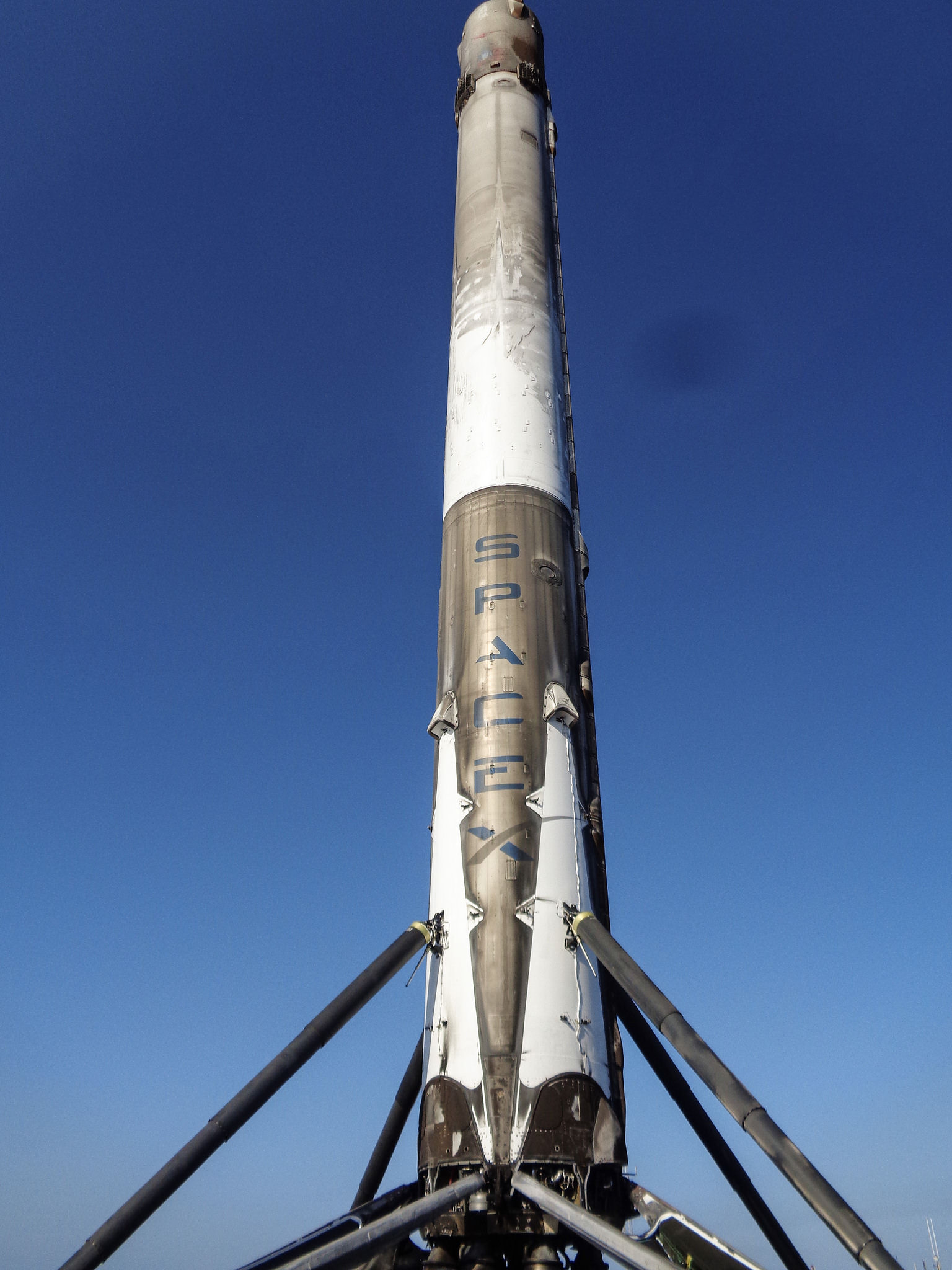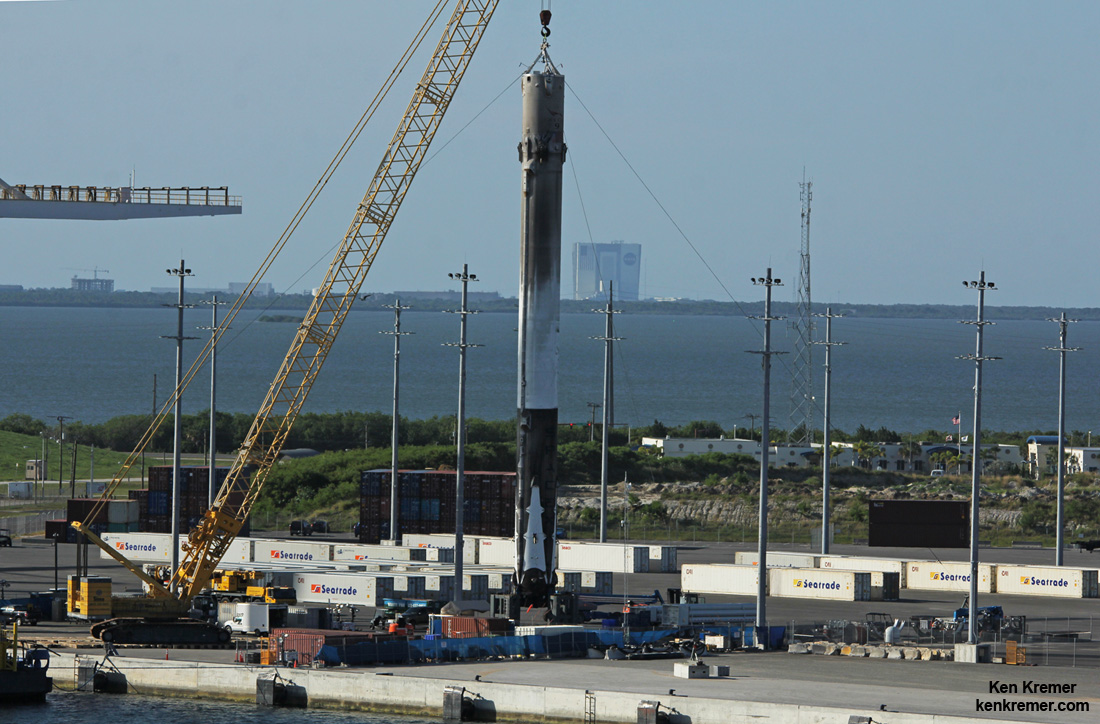
PORT CANAVERAL, FL — Rocket recycling continues apace as the latest SpaceX Falcon 9 rocket to successfully launch a payload to orbit on Aug. 14 and land the first stage at sea minutes later, sailed safely into Port Canaveral just days later atop the dedicated drone ship landing platform.
It’s just the latest previously unfathomable and science fictionesque space adventure turned into science reality by SpaceX – a burgeoning aerospace giant.
A virgin SpaceX Falcon 9 rocket carrying the Japanese JCSAT-16 telecom satellite roared to life past midnight last Sunday, Aug. 14, at 1:26 a.m. EDT and streaked to orbit from Space Launch Complex 40 on Cape Canaveral Air Force Station in Florida.
After the first stage firing was completed, it separated from the second stage, turned around 180 degrees, relit three of its Merlin 1D engines and began descending back to Earth towards the waiting drone ship barge.
Scarcely nine minutes later the 15 story tall first stage completed a pinpoint and upright soft landing on a prepositioned ocean going platform some 400 miles (650 km) off shore of of Florida’s east coast in the Atlantic Ocean., after successfully delivering the Japanese communications satellite to its intended geostationary orbit.
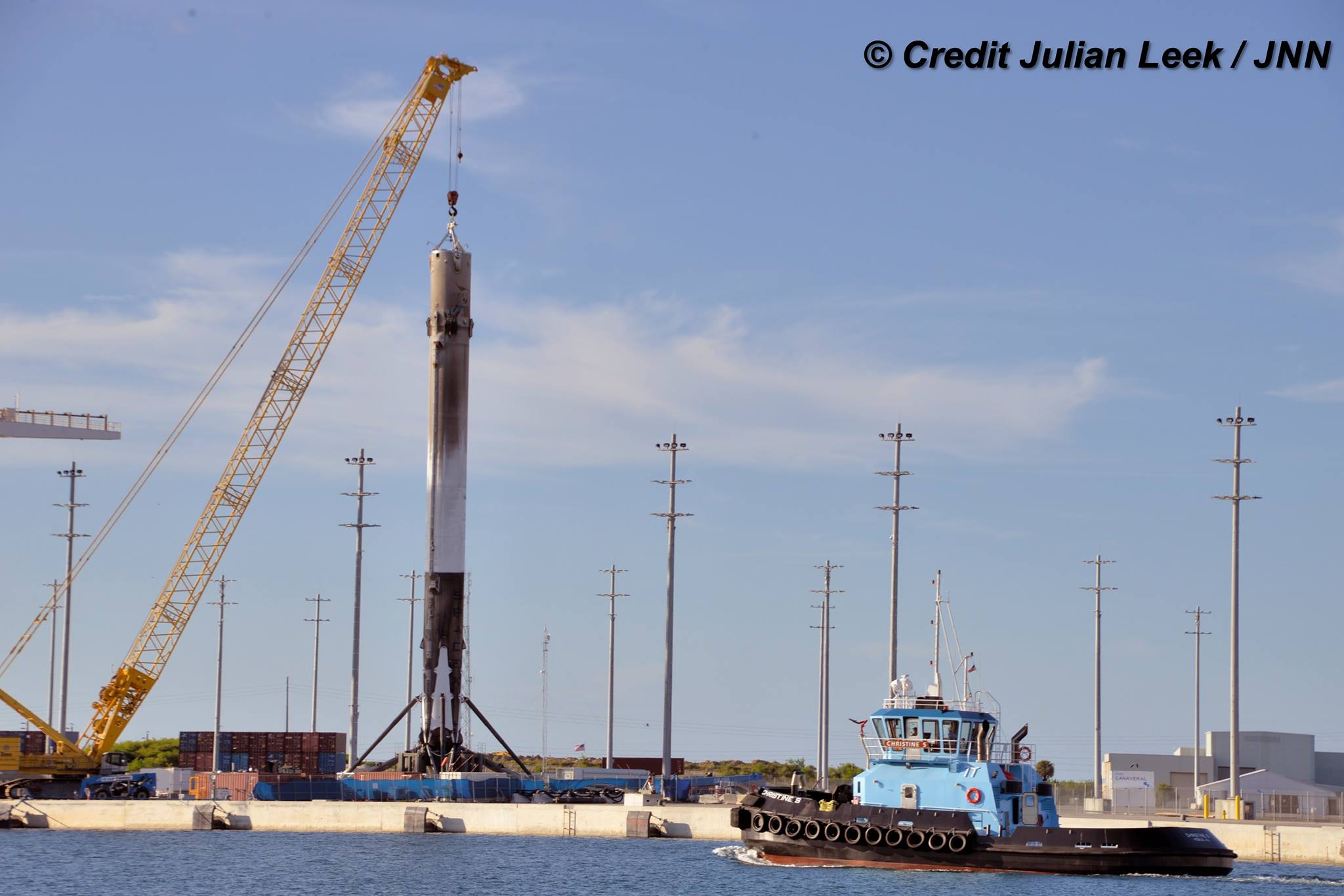
It was towed back into port on Wedenesday, Aug. 16 atop the diminutive ocean landing platform measuring only about 170 ft × 300 ft (52 m × 91 m). SpaceX formally dubs it an ‘Autonomous Spaceport Drone Ship’ or ASDS.
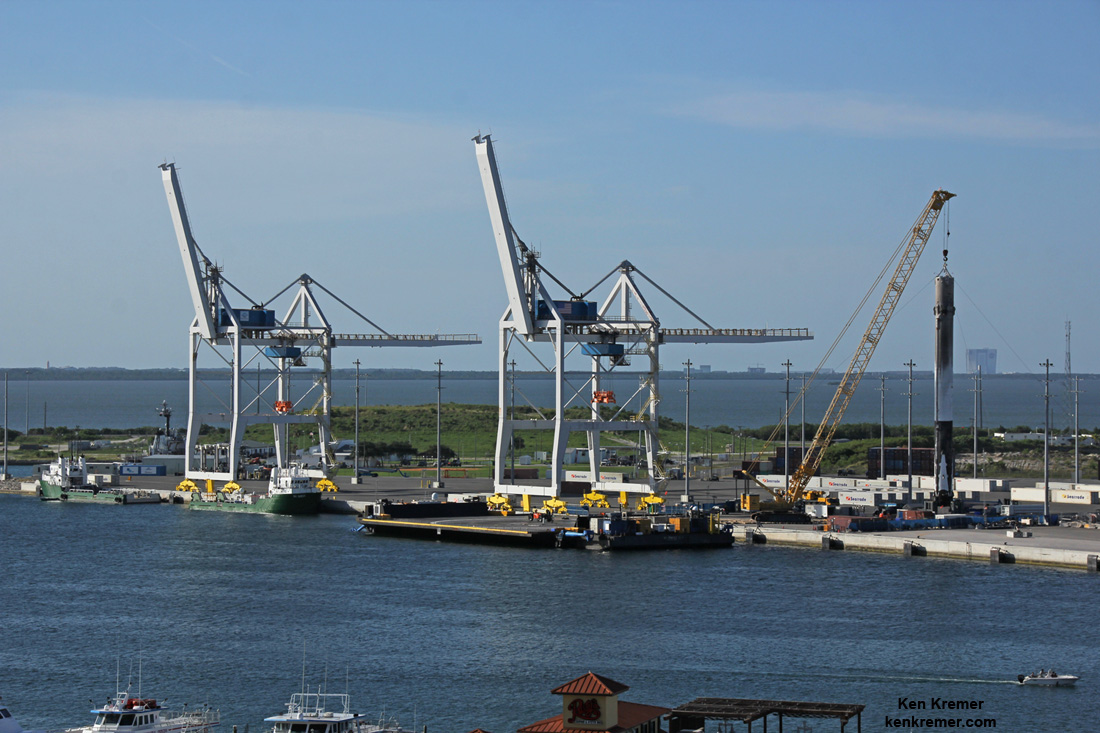
The JCSAT-16 satellite was successfully deployed from the second stage about 32 minutes after liftoff from Cape Canaveral – as the primary objective of this flight.
The secondary experimental objective was to try and recover the first stage booster via a propulsive landing on the ocean-going platform named “Of Course I Still Love You” or OCISLY.
The ocean-going barge is named “Of Course I Still Love You” after a starship from a novel written by Iain M. Banks.
OCISLY and the vertical booster arrived back into Port Canaveral three days later on Wednesday morning, Aug. 17,floating past unsuspecting tourists and pleasure craft.
A heavy duty crane lifted the spent 156-foot-tall (47-meter) booster off the OCISLY barge and onto a restraining cradle within hours of arrival.
Watch this exquisitely detailed video from USLaunchReport showing workers capping the first stage and preparing the booster for craning off the barge on Aug. 17, 2016.
Video Caption: SpaceX – JCSAT-16 – In Port – YouTube 4K – 08-17-2016. Credit: USLaunchReport
One by one, workers then removed all four landing legs over the next two days.
It will be tilted and lowered horizontally and then be placed onto a multi-wheeled transport for shipment back to SpaceX launch processing facilities and hangars at Cape Canaveral for refurbishment, exhaustive engine and structural testing. It will also be washed, stored and evaluated for reuse.
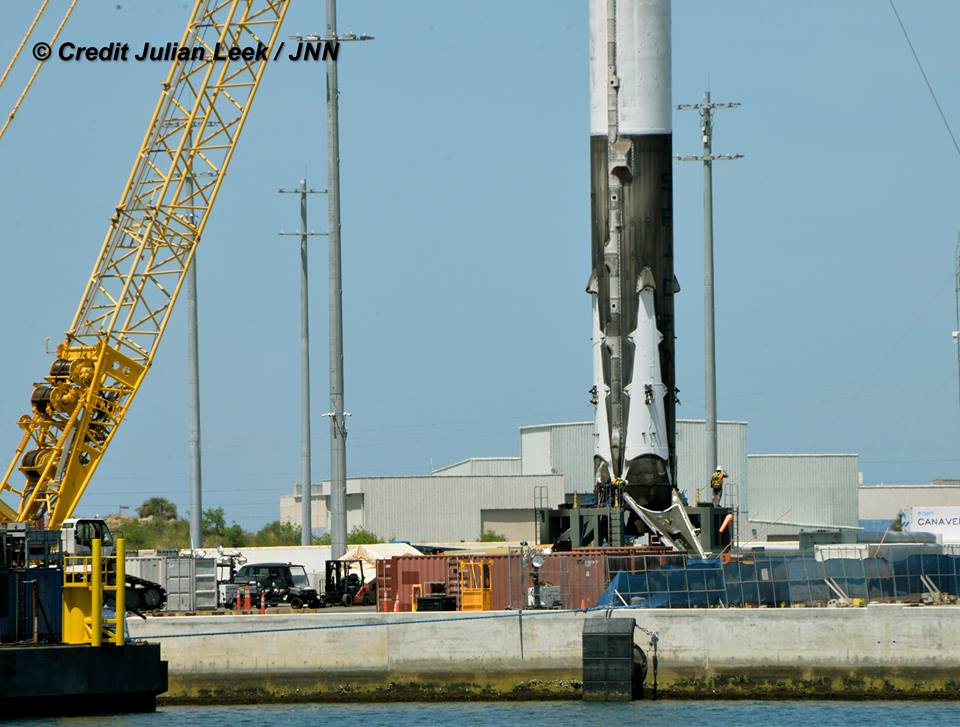
As always, SpaceX will derive lessons learned and apply them to the upcoming missions – as outlined by SpaceX VP Hans Koenigsmann in my story here.
This 6th successful Falcon upright first stage landing – two by land and four by sea – is part of a continuing series of technological marvels/miracles rocking the space industry to its core.
The sextet of intact and upright touchdowns of the recovered 156-foot-tall (47-meter) booster count as stunning successes towards SpaceX founder and CEO Elon Musk’s vision of rocket reusability and radically slashing the cost of sending rockets to space by recovering the boosters and eventually reflying them with new payloads from paying customers.
To date SpaceX had successfully recovered first stages three times in a row at sea earlier this year on the ocean going drone ship barge using the company’s OCISLY Autonomous Spaceport Drone Ship (ASDS) on April 8, May 6 and May 27.
Two land landings back at Cape Canaveral Landing Zone-1 were accomplished on Dec. 21, 2015 and July 18, 2016.
The JCSAT-16 communications satellite was built by Space Systems Loral for Tokyo-based SKY Perfect JSAT Corp. It is equipped Ku-band and Ka-band communications services for customers of SKY Perfect JSAT Corp.
The satellite was launched using the upgraded version of the 229 foot tall Falcon 9 rocket.
Relive the launch via this pair of videos from remote video cameras set at the SpaceX launch pad 40 facility:
Video caption: SpaceX Falcon 9 launch of JCSAT-16 on Aug. 14, 2016 from Space Launch Complex 40 at Cape Canaveral Air Force Station, Fl. Credit: Ken Kremer/kenkremer.com
Video Caption: Launch of the JCSAT-16 communications satellite on a SpaceX Falcon 9 rocket on 8/14/2016 from Pad 40 of CCAFS. Credit: Jeff Seibert
SKY Perfect JSAT Corp. is a leading satellite operator in the Asia – Pacific region. JCSAT-16 will be positioned 22,300 miles (35,800 kilometers) above the equator.
The Aug. 14 launch was the second this year for SKY Perfect JSAT. The JCSAT-14 satellite was already successfully launched earlier this year atop a SpaceX Falcon 9 on May 6.
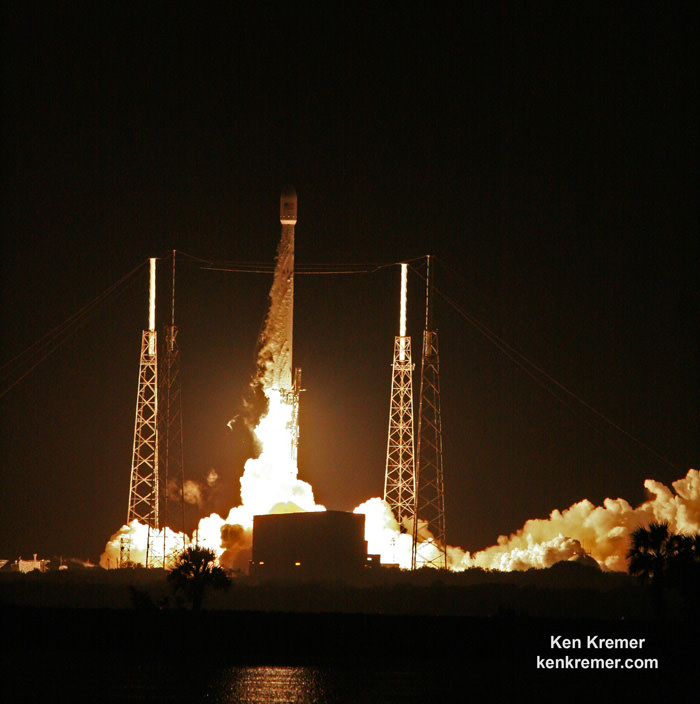
JCSAT-16 will primarily serve as an on orbit back up spare for the company’s existing services, a company spokeswomen told Universe Today at the media launch viewing site.
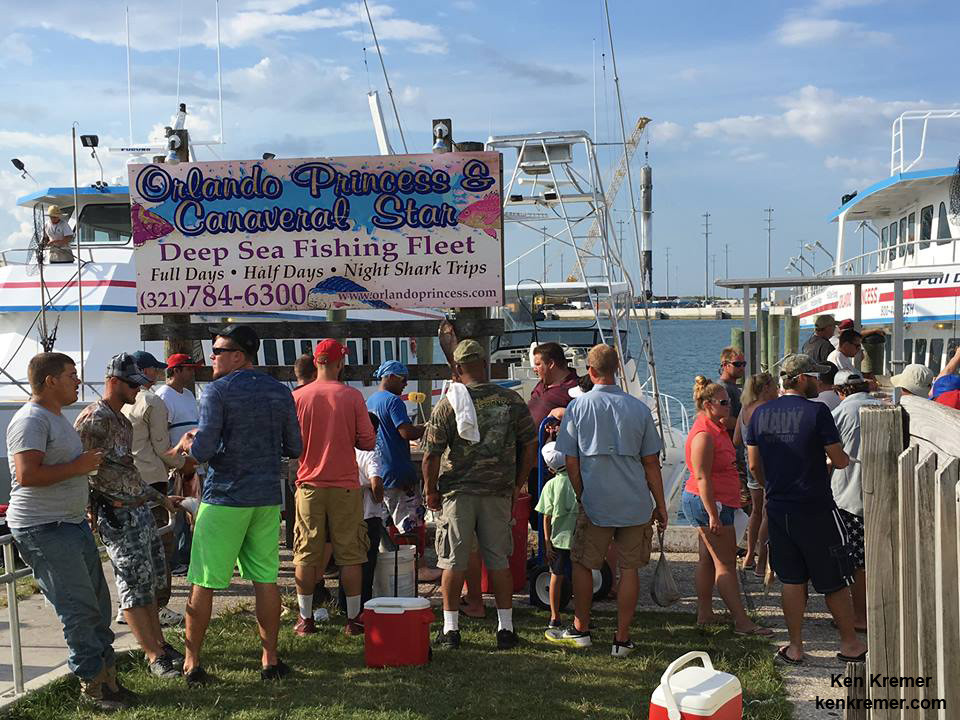
Stay tuned here for Ken’s continuing Earth and planetary science and human spaceflight news.
